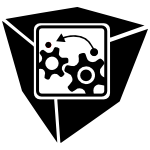453 papers:
 QoSA-2015-DurisicST #architecture #identification #set #standard
QoSA-2015-DurisicST #architecture #identification #set #standard- Identifying Optimal Sets of Standardized Architectural Features: A Method and its Automotive Application (DD, MS, MT), pp. 103–112.
 DATE-2015-ChungSS #identification
DATE-2015-ChungSS #identification- Identifying redundant inter-cell margins and its application to reducing routing congestion (WC, SS, YS), pp. 1659–1664.
 DATE-2015-OyaSYT #classification #identification
DATE-2015-OyaSYT #classification #identification- A score-based classification method for identifying hardware-trojans at gate-level netlists (MO, YS, MY, NT), pp. 465–470.
 SIGMOD-2015-RazniewskiKNS #database #identification #query
SIGMOD-2015-RazniewskiKNS #database #identification #query- Identifying the Extent of Completeness of Query Answers over Partially Complete Databases (SR, FK, WN, DS), pp. 561–576.
 ICSME-2015-BaloghABVGV #developer #identification #interactive
ICSME-2015-BaloghABVGV #developer #identification #interactive- Identifying wasted effort in the field via developer interaction data (GB, GA, ÁB, LV, TG, AZV), pp. 391–400.
 ICSME-2015-PawelkaJ #case study #identifier #natural language
ICSME-2015-PawelkaJ #case study #identifier #natural language- Is this code written in English? A study of the natural language of comments and identifiers in practice (TP, EJ), pp. 401–410.
 MSR-2015-GuptaSPA #bibliography #challenge #identification #process #scalability
MSR-2015-GuptaSPA #bibliography #challenge #identification #process #scalability- Identifying Software Process Management Challenges: Survey of Practitioners in a Large Global IT Company (MG, AS, SP, AMA), pp. 346–356.
 SANER-2015-InfanteB #identification
SANER-2015-InfanteB #identification- Efficiently identifying object production sites (AI, AB), pp. 575–579.
 SANER-2015-OumarouAEDK #identification
SANER-2015-OumarouAEDK #identification- Identifying the exact fixing actions of static rule violation (HO, NA, AE, SD, DTK), pp. 371–379.
 SCAM-2015-GhafariGR #automation #identification #testing
SCAM-2015-GhafariGR #automation #identification #testing- Automatically identifying focal methods under test in unit test cases (MG, CG, KR), pp. 61–70.
 HIMI-IKC-2015-WangN #analysis #identification #matrix
HIMI-IKC-2015-WangN #analysis #identification #matrix- Dot Matrix Analysis of Plant Operation Data for Identifying Sequential Alarms Triggered by Single Root Cause (ZW, MN), pp. 152–158.
 SCSM-2015-VillelaXP #collaboration #identification #network
SCSM-2015-VillelaXP #collaboration #identification #network- Identifying Collaboration Strategies in Scientific Collaboration Networks (MLBV, SX, ROP), pp. 253–264.
 ECIR-2015-GogMP #identification #on the #statistics #using
ECIR-2015-GogMP #identification #on the #statistics #using- On Identifying Phrases Using Collection Statistics (SG, AM, MP), pp. 278–283.
 ICML-2015-WuGS #combinator #feedback #finite #identification #on the
ICML-2015-WuGS #combinator #feedback #finite #identification #on the- On Identifying Good Options under Combinatorially Structured Feedback in Finite Noisy Environments (YW, AG, CS), pp. 1283–1291.
 KDD-2015-KicKimanR #identification #social #social media #towards
KDD-2015-KicKimanR #identification #social #social media #towards- Towards Decision Support and Goal Achievement: Identifying Action-Outcome Relationships From Social Media (EK, MR), pp. 547–556.
 KDD-2015-LakkarajuASMBGA #framework #identification #machine learning #student
KDD-2015-LakkarajuASMBGA #framework #identification #machine learning #student- A Machine Learning Framework to Identify Students at Risk of Adverse Academic Outcomes (HL, EA, CS, DM, NB, RG, KLA), pp. 1909–1918.
 KDD-2015-RongCM #identification #modelling #social #why
KDD-2015-RongCM #identification #modelling #social #why- Why It Happened: Identifying and Modeling the Reasons of the Happening of Social Events (YR, HC, ZM), pp. 1015–1024.
 KDD-2015-ShahafHM #identification
KDD-2015-ShahafHM #identification- Inside Jokes: Identifying Humorous Cartoon Captions (DS, EH, RM), pp. 1065–1074.
 SEKE-2015-Tasse #analysis #identification #metric #using
SEKE-2015-Tasse #analysis #identification #metric #using- Using peak analysis for identifying lagged effects between software metrics (JT), pp. 512–515.
 SEKE-2015-TironiMRM #approach #identification #learning
SEKE-2015-TironiMRM #approach #identification #learning- An approach to identify relevant subjects for supporting the Learning Scheme creation task (HT, ALAM, SSR, AM), pp. 506–511.
 SIGIR-2015-AlbakourMO #data type #identification #metadata #topic #using
SIGIR-2015-AlbakourMO #data type #identification #metadata #topic #using- Using Sensor Metadata Streams to Identify Topics of Local Events in the City (MDA, CM, IO), pp. 711–714.
 SIGIR-2015-HarelY #clustering #identification #query
SIGIR-2015-HarelY #clustering #identification #query- Modularity-Based Query Clustering for Identifying Users Sharing a Common Condition (MGOH, EYT), pp. 819–822.
 MoDELS-2015-RagoMD #case study #identification #semantics
MoDELS-2015-RagoMD #case study #identification #semantics- Identifying duplicate functionality in textual use cases by aligning semantic actions (SoSyM abstract) (AR, CM, JADP), p. 446.
 GPCE-2015-MedeirosRRTG #empirical #identifier
GPCE-2015-MedeirosRRTG #empirical #identifier- An empirical study on configuration-related issues: investigating undeclared and unused identifiers (FM, IR, MR, LT, RG), pp. 35–44.
 SAC-2015-FahnrichSP #database #identification #in memory #search-based
SAC-2015-FahnrichSP #database #identification #in memory #search-based- Facing the genome data deluge: efficiently identifying genetic variants with in-memory database technology (CF, MPS, HP), pp. 18–25.
 ESEC-FSE-2015-ZhengMZ #capacity #constraints #identification #problem #process
ESEC-FSE-2015-ZhengMZ #capacity #constraints #identification #problem #process- A method to identify and correct problematic software activity data: exploiting capacity constraints and data redundancies (QZ, AM, MZ), pp. 637–648.
 CASE-2014-HuangYL #approach #identification
CASE-2014-HuangYL #approach #identification- An intelligent approach to identify elderly body information (YPH, WJY, SYL), pp. 824–829.
 HT-2014-KumarHL #approach #behaviour #identification #twitter
HT-2014-KumarHL #approach #behaviour #identification #twitter- A behavior analytics approach to identifying tweets from crisis regions (SK, XH, HL), pp. 255–260.
 HT-2014-Saez-Trumper #identification #twitter
HT-2014-Saez-Trumper #identification #twitter- Fake tweet buster: a webtool to identify users promoting fake news ontwitter (DST), pp. 316–317.
 ITiCSE-2014-FalknerVF #identification #learning #self
ITiCSE-2014-FalknerVF #identification #learning #self- Identifying computer science self-regulated learning strategies (KF, RV, NJGF), pp. 291–296.
 CSMR-WCRE-2014-AntinyanSMOWWHH #agile #case study #development #experience #identification #industrial #risk management
CSMR-WCRE-2014-AntinyanSMOWWHH #agile #case study #development #experience #identification #industrial #risk management- Identifying risky areas of software code in Agile/Lean software development: An industrial experience report (VA, MS, WM, PÖ, EW, JW, AH, JH), pp. 154–163.
 ICPC-2014-EshkevariACP #identification #php
ICPC-2014-EshkevariACP #identification #php- Identifying and locating interference issues in PHP applications: the case of WordPress (LME, GA, JRC, MDP), pp. 157–167.
 ICSME-2014-PanichellaBPCA #developer #how
ICSME-2014-PanichellaBPCA #developer #how- How Developers’ Collaborations Identified from Different Sources Tell Us about Code Changes (SP, GB, MDP, GC, GA), pp. 251–260.
 MSR-2014-NguyenNHNF #automation #case study #identification #industrial #performance
MSR-2014-NguyenNHNF #automation #case study #identification #industrial #performance- An industrial case study of automatically identifying performance regression-causes (THDN, MN, AEH, MNN, PF), pp. 232–241.
 SCAM-2014-KawamitsuIKKRI #identification #repository #reuse #similarity #source code #using
SCAM-2014-KawamitsuIKKRI #identification #repository #reuse #similarity #source code #using- Identifying Source Code Reuse across Repositories Using LCS-Based Source Code Similarity (NK, TI, TK, RGK, CDR, KI), pp. 305–314.
 HCI-TMT-2014-MattosPP #identification #interactive
HCI-TMT-2014-MattosPP #identification #interactive- Can Users Speak for Themselves? Investigating Users Ability to Identify Their Own Interactive Breakdowns (BAMM, RLSP, ROP), pp. 521–532.
 HCI-TMT-2014-PenderL #identification
HCI-TMT-2014-PenderL #identification- Identifying Intention and Perception Mismatches in Digitally Augmented Museum Settings (HLP, DL), pp. 565–576.
 HIMI-AS-2014-JiangLLC #identification #network #sequence
HIMI-AS-2014-JiangLLC #identification #network #sequence- Neural Networks for Identifying Civil Pilot’s Operation Sequences (ZJ, QL, YL, BC), pp. 241–252.
 SCSM-2014-LeonardoFGPSSUWC #identification #social #social media #trust
SCSM-2014-LeonardoFGPSSUWC #identification #social #social media #trust- Identifying Locations of Social Significance: Aggregating Social Media Content to Create a New Trust Model for Exploring Crowd Sourced Data and Information (ADL, SF, AG, FP, WS, TS, AU, DW, JBC), pp. 170–177.
 CAiSE-2014-GralhaG0 #composition #identification #modelling #requirements
CAiSE-2014-GralhaG0 #composition #identification #modelling #requirements- Identifying Modularity Improvement Opportunities in Goal-Oriented Requirements Models (CG, MG, JA), pp. 91–104.
 CAiSE-2014-SimouKKG #challenge #forensics #identification
CAiSE-2014-SimouKKG #challenge #forensics #identification- Cloud Forensics: Identifying the Major Issues and Challenges (SS, CK, EK, SG), pp. 271–284.
 ICEIS-v2-2014-HoosGKM #analysis #framework #identification #mobile #process
ICEIS-v2-2014-HoosGKM #analysis #framework #identification #mobile #process- Improving Business Processes Through Mobile Apps — An Analysis Framework to Identify Value-added App Usage Scenarios (EH, CG, SK, BM), pp. 71–82.
 CIKM-2014-ElsawyMM #identification #social #social media
CIKM-2014-ElsawyMM #identification #social #social media- TweetMogaz v2: Identifying News Stories in Social Media (EE, MM, WM), pp. 2042–2044.
 CIKM-2014-GuptaB #identification #query
CIKM-2014-GuptaB #identification #query- Identifying Time Intervals of Interest to Queries (DG, KB), pp. 1835–1838.
 CIKM-2014-LuSY #identification #network #social
CIKM-2014-LuSY #identification #network #social- Identifying Your Customers in Social Networks (CTL, HHS, PSY), pp. 391–400.
 CIKM-2014-WenR #behaviour #identification #mining #online
CIKM-2014-WenR #behaviour #identification #mining #online- Identifying Latent Study Habits by Mining Learner Behavior Patterns in Massive Open Online Courses (MW, CPR), pp. 1983–1986.
 CIKM-2014-ZengBLLL #identification #keyword #named #query #relational
CIKM-2014-ZengBLLL #identification #keyword #named #query #relational- ExpressQ: Identifying Keyword Context and Search Target in Relational Keyword Queries (ZZ, ZB, TNL, MLL, TWL), pp. 31–40.
 ECIR-2014-MeguebliKDP #approach #identification
ECIR-2014-MeguebliKDP #approach #identification- Unsupervised Approach for Identifying Users’ Political Orientations (YM, MK, BLD, FP), pp. 507–512.
 ICPR-2014-KumarPJ #identification #music
ICPR-2014-KumarPJ #identification #music- Identifying Ragas in Indian Music (VK, HP, CVJ), pp. 767–772.
 ICPR-2014-NegiC #identification #image #set
ICPR-2014-NegiC #identification #image #set- Identifying Diverse Set of Images in Flickr (SN, SC), pp. 3624–3629.
 KDD-2014-DundarYR #identification #towards
KDD-2014-DundarYR #identification #towards- Batch discovery of recurring rare classes toward identifying anomalous samples (MD, HZY, BR), pp. 223–232.
 KDD-2014-LiDDCZ #identification #process
KDD-2014-LiDDCZ #identification #process- Identifying and labeling search tasks via query-based hawkes processes (LL, HD, AD, YC, HZ), pp. 731–740.
 KDD-2014-XueWCG #identification
KDD-2014-XueWCG #identification- Identifying tourists from public transport commuters (MX, HW, WC, WSN, GHG), pp. 1779–1788.
 KDIR-2014-BarcanteJDCCS #identification #mining #using
KDIR-2014-BarcanteJDCCS #identification #mining #using- Identifying Drug Repositioning Targets using Text Mining (EB, MJ, FD, EC, OGC, FS), pp. 348–353.
 KDIR-2014-OkumuraYSO #identification #twitter
KDIR-2014-OkumuraYSO #identification #twitter- Identifying Tweets that Contain a “Heartwarming Story” (MO, YY, MS, HO), pp. 323–326.
 MLDM-2014-AbdullahiCM #approach #identification #novel #using
MLDM-2014-AbdullahiCM #approach #identification #novel #using- A Novel Approach for Identifying Banded Patterns in Zero-One Data Using Column and Row Banding Scores (FBA, FC, RM), pp. 58–72.
 SEKE-2014-NetoC #identification
SEKE-2014-NetoC #identification- Identifying Threats to Validity and Control Actions in the Planning Stages of Controlled Experiments (AAN, TC), pp. 256–261.
 SEKE-2014-SantosM #detection #identification
SEKE-2014-SantosM #detection #identification- Identifying strategies on god class detection in two controlled experiments (JAMS, MGM), pp. 244–249.
 SEKE-2014-YangL #agile #architecture #development #identification
SEKE-2014-YangL #agile #architecture #development #identification- Identifying and Recording Software Architectural Assumptions in Agile Development (CY, PL), pp. 308–313.
 SIGIR-2014-WangZZL #identification #keyword #twitter
SIGIR-2014-WangZZL #identification #keyword #twitter- Efficiently identify local frequent keyword co-occurrence patterns in geo-tagged Twitter stream (XW, YZ, WZ, XL), pp. 1215–1218.
 ECMFA-2014-MartinezZKT #identification #variability #visualisation
ECMFA-2014-MartinezZKT #identification #variability #visualisation- Identifying and Visualising Commonality and Variability in Model Variants (JM, TZ, JK, YLT), pp. 117–131.
 ECOOP-2014-NittaKT #framework #identification
ECOOP-2014-NittaKT #framework #identification- Identifying Mandatory Code for Framework Use via a Single Application Trace (NN, IK, YT), pp. 593–617.
 RE-2014-MasseyRAS #ambiguity #identification #requirements
RE-2014-MasseyRAS #ambiguity #identification #requirements- Identifying and classifying ambiguity for regulatory requirements (AKM, RLR, AIA, PPS), pp. 83–92.
 RE-2014-RiazKSW #automation #identification #natural language #requirements #security
RE-2014-RiazKSW #automation #identification #natural language #requirements #security- Hidden in plain sight: Automatically identifying security requirements from natural language artifacts (MR, JTK, JS, LAW), pp. 183–192.
 SAC-2014-GraziadioDSSUME #game studies #identification #video
SAC-2014-GraziadioDSSUME #game studies #identification #video- Bespoke video games to provide early response markers to identify the optimal strategies for maximizing rehabilitation (SG, RD, KS, KMAS, GU, GM, JAE), pp. 20–24.
 SAC-2014-HosokawaNY #identification #information retrieval
SAC-2014-HosokawaNY #identification #information retrieval- Location-aware information retrieval for identifying local and distant landmark (YH, YN, TY), pp. 428–435.
 SAC-2014-HuergoPD #approach #identification #modelling #using
SAC-2014-HuergoPD #approach #identification #modelling #using- A method to identify services using master data and artifact-centric modeling approach (RSH, PFP, FCD), pp. 1225–1230.
 FSE-2014-BosuCHHJ #empirical #identification
FSE-2014-BosuCHHJ #empirical #identification- Identifying the characteristics of vulnerable code changes: an empirical study (AB, JCC, MH, PH, DJ), pp. 257–268.
 SPLC-2014-AngererPLGG #dependence #graph #identification #product line
SPLC-2014-AngererPLGG #dependence #graph #identification #product line- Identifying inactive code in product lines with configuration-aware system dependence graphs (FA, HP, DL, AG, PG), pp. 52–61.
 OSDI-2014-ChenKWZK #identification #web
OSDI-2014-ChenKWZK #identification #web- Identifying Information Disclosure in Web Applications with Retroactive Auditing (HC, TK, XW, NZ, MFK), pp. 555–569.
 PPoPP-2014-IsaacsGBBSH #execution #identification #logic #parallel
PPoPP-2014-IsaacsGBBSH #execution #identification #logic #parallel- Extracting logical structure and identifying stragglers in parallel execution traces (KEI, TG, AB, PTB, MS, BH), pp. 397–398.
 ISSTA-2014-NejatiB #constraints #cpu #identification #trade-off #using
ISSTA-2014-NejatiB #constraints #cpu #identification #trade-off #using- Identifying optimal trade-offs between CPU time usage and temporal constraints using search (SN, LCB), pp. 351–361.
 VMCAI-2014-EhlersSK #identifier #synthesis
VMCAI-2014-EhlersSK #identifier #synthesis- Synthesis with Identifiers (RE, SAS, HKG), pp. 415–433.
 ASE-2013-SumnerZ #analysis #execution #identification
ASE-2013-SumnerZ #analysis #execution #identification- Identifying execution points for dynamic analyses (WNS, XZ), pp. 81–91.
 DAC-2013-AngioneCCLN #modelling
DAC-2013-AngioneCCLN #modelling- Pareto epsilon-dominance and identifiable solutions for BioCAD modeling (CA, JC, GC, PL, GN), p. 9.
 DATE-2013-LagraaTP #concurrent #data access #data mining #identification #memory management #mining #simulation
DATE-2013-LagraaTP #concurrent #data access #data mining #identification #memory management #mining #simulation- Data mining MPSoC simulation traces to identify concurrent memory access patterns (SL, AT, FP), pp. 755–760.
 HT-2013-KumarMZL #identification
HT-2013-KumarMZL #identification- Whom should I follow?: identifying relevant users during crises (SK, FM, RZ, HL), pp. 139–147.
 PODS-2013-Gottlob #identification #polynomial
PODS-2013-Gottlob #identification #polynomial- Deciding monotone duality and identifying frequent itemsets in quadratic logspace (GG), pp. 25–36.
 TACAS-2013-WhiteL #data type #evolution #identification #in memory #learning #memory management
TACAS-2013-WhiteL #data type #evolution #identification #in memory #learning #memory management- Identifying Dynamic Data Structures by Learning Evolving Patterns in Memory (DHW, GL), pp. 354–369.
 CSMR-2013-AbebeT #automation #identifier
CSMR-2013-AbebeT #automation #identifier- Automated Identifier Completion and Replacement (SLA, PT), pp. 263–272.
 ICPC-2013-GuptaMPV #identifier #re-engineering #tool support
ICPC-2013-GuptaMPV #identifier #re-engineering #tool support- Part-of-speech tagging of program identifiers for improved text-based software engineering tools (SG, SM, LLP, KVS), pp. 3–12.
 ICPC-2013-MondalRS #co-evolution #empirical #identification
ICPC-2013-MondalRS #co-evolution #empirical #identification- Insight into a method co-change pattern to identify highly coupled methods: An empirical study (MM, CKR, KAS), pp. 103–112.
 ICSM-2013-Karus #automation #development #identification
ICSM-2013-Karus #automation #development #identification- Automatic Means of Identifying Evolutionary Events in Software Development (SK), pp. 412–415.
 ICSM-2013-ScannielloR #fault #identifier #source code
ICSM-2013-ScannielloR #fault #identifier #source code- Dealing with Faults in Source Code: Abbreviated vs. Full-Word Identifier Names (GS, MR), pp. 190–199.
 ICSM-2013-ToroiRV #case study #identification #process #testing
ICSM-2013-ToroiRV #case study #identification #process #testing- Identifying Process Improvement Targets in Test Processes: A Case Study (TT, AR, LV), pp. 11–19.
 MSR-2013-BinkleyLPHV #dataset #identifier
MSR-2013-BinkleyLPHV #dataset #identifier- A dataset for evaluating identifier splitters (DB, DL, LLP, EH, KVS), pp. 401–404.
 MSR-2013-ButlerWYS #dataset #identifier #named
MSR-2013-ButlerWYS #dataset #identifier #named- INVocD: identifier name vocabulary dataset (SB, MW, YY, HS), pp. 405–408.
 MSR-2013-ManiNMNSN #debugging #identification #repository
MSR-2013-ManiNMNSN #debugging #identification #repository- Bug resolution catalysts: identifying essential non-committers from bug repositories (SM, SN, DM, RN, VSS, AAN), pp. 193–202.
 CHI-2013-BirnbaumBFDK #behaviour #identification #using
CHI-2013-BirnbaumBFDK #behaviour #identification #using- Using behavioral data to identify interviewer fabrication in surveys (BEB, GB, ADF, BD, ARK), pp. 2911–2920.
 CHI-2013-HaraLF #artificial reality #crowdsourcing #identification #problem
CHI-2013-HaraLF #artificial reality #crowdsourcing #identification #problem- Combining crowdsourcing and google street view to identify street-level accessibility problems (KH, VL, JF), pp. 631–640.
 CSCW-2013-SmithQC #analysis #identification #using
CSCW-2013-SmithQC #analysis #identification #using- Finger on the pulse: identifying deprivation using transit flow analysis (CSC, DQ, LC), pp. 683–692.
 DUXU-CXC-2013-CarignanK #case study #gamification #identification
DUXU-CXC-2013-CarignanK #case study #gamification #identification- Case Study: Identifying Gamification Opportunities in Sales Applications (JC, SLK), pp. 501–507.
 HCI-AMTE-2013-SantosM #automation #design #identification #implementation #interactive
HCI-AMTE-2013-SantosM #automation #design #identification #implementation #interactive- Design and Implementation of ErgoIdentifier: A Tool for Automated Identification of Websites Interaction Elements (OFdS, MM), pp. 249–255.
 HCI-UC-2013-RodilJRW #identification #representation
HCI-UC-2013-RodilJRW #identification #representation- Identifying and Representing Elements of Local Contexts in Namibia (KR, KLJ, MR, HWT), pp. 332–341.
 OCSC-2013-RichterBKF #contest #idea #identification #online
OCSC-2013-RichterBKF #contest #idea #identification #online- Online Idea Contests: Identifying Factors for User Retention (SR, SPB, GK, JF), pp. 76–85.
 KDD-2013-SunBK #identification #optimisation #polynomial
KDD-2013-SunBK #identification #optimisation #polynomial- Quadratic optimization to identify highly heritable quantitative traits from complex phenotypic features (JS, JB, HRK), pp. 811–819.
 KEOD-2013-SagaeF #development #identification #image
KEOD-2013-SagaeF #development #identification #image- Knowledge Resource Development for Identifying Matching Image Descriptions (AS, SEF), pp. 100–108.
 SEKE-2013-AnchietaSM #case study #diagrams #identification #prototype #uml #user interface #using
SEKE-2013-AnchietaSM #case study #diagrams #identification #prototype #uml #user interface #using- Using NLP Techniques for Identifying GUI Prototypes and UML Diagrams From Use Cases (RTA, RFdS, RSM), pp. 48–53.
 SEKE-2013-KayaF #identification
SEKE-2013-KayaF #identification- Identifying Extract Method Opportunities Based on Variable References (S) (MK, JWF), pp. 153–158.
 SEKE-2013-LosadaJ #documentation #identification #semantics
SEKE-2013-LosadaJ #documentation #identification #semantics- Processing rhetorical, morphosyntactic, and semantic features from corporate technical documents for identifying organizational domain knowledge (S) (BML, CMZJ), pp. 268–272.
 SEKE-2013-MarcalGCJ #identification #mining #repository #using
SEKE-2013-MarcalGCJ #identification #mining #repository #using- Mining Software Repository to Identify Crosscutting Concerns Using Combined Techniques (S) (IM, REG, RCMC, COJ), pp. 338–343.
 SIGIR-2013-ArroyueloGOS #documentation #identifier #performance
SIGIR-2013-ArroyueloGOS #documentation #identifier #performance- Document identifier reassignment and run-length-compressed inverted indexes for improved search performance (DA, SG, MO, VS), pp. 173–182.
 RE-2013-NcubeLD #challenge #identification #requirements #research
RE-2013-NcubeLD #challenge #identification #requirements #research- Identifying top challenges for international research on requirements engineering for systems of systems engineering (CN, SLL, HD), pp. 342–344.
 SAC-2013-InzingerHSLD #identification #implementation #using
SAC-2013-InzingerHSLD #identification #implementation #using- Identifying incompatible service implementations using pooled decision trees (CI, WH, BS, PL, SD), pp. 485–492.
 SAC-2013-PorterA #algorithm #identification
SAC-2013-PorterA #algorithm #identification- An evolutionary spline fitting algorithm for identifying filamentous cyanobacteria (JP, DVA), pp. 40–45.
 ESEC-FSE-2013-BlincoeVD #coordination #dependence #identification
ESEC-FSE-2013-BlincoeVD #coordination #dependence #identification- Do all task dependencies require coordination? the role of task properties in identifying critical coordination needs in software projects (KB, GV, DD), pp. 213–223.
 ESEC-FSE-2013-GarciaPSHM #distributed #identification
ESEC-FSE-2013-GarciaPSHM #distributed #identification- Identifying message flow in distributed event-based systems (JG, DP, GS, WGJH, NM), pp. 367–377.
 ICSE-2013-Ell #developer #identification #network
ICSE-2013-Ell #developer #identification #network- Identifying failure inducing developer pairs within developer networks (JE), pp. 1471–1473.
 ICSE-2013-Khalid #identification #on the
ICSE-2013-Khalid #identification #on the- On identifying user complaints of iOS apps (HK), pp. 1474–1476.
 SPLC-2013-KoziolekGGDS #analysis #case study #experience #identification #reuse
SPLC-2013-KoziolekGGDS #analysis #case study #experience #identification #reuse- Experiences from identifying software reuse opportunities by domain analysis (HK, TG, TdG, DD, SS), pp. 208–217.
 ISSTA-2013-XiaoHZX #identification #performance
ISSTA-2013-XiaoHZX #identification #performance- Context-sensitive delta inference for identifying workload-dependent performance bottlenecks (XX, SH, DZ, TX), pp. 90–100.
 ASE-2012-Meananeatra #identification #maintenance #refactoring #sequence
ASE-2012-Meananeatra #identification #maintenance #refactoring #sequence- Identifying refactoring sequences for improving software maintainability (PM), pp. 406–409.
 ASE-2012-MorenoM #automation #identification #java #named
ASE-2012-MorenoM #automation #identification #java #named- JStereoCode: automatically identifying method and class stereotypes in Java code (LM, AM), pp. 358–361.
 DRR-2012-KimLT #classification #identification
DRR-2012-KimLT #classification #identification- Combining SVM classifiers to identify investigator name zones in biomedical articles (JK, DXL, GRT).
 VLDB-2012-AgarwalRB #clustering #graph #identification #realtime
VLDB-2012-AgarwalRB #clustering #graph #identification #realtime- Real Time Discovery of Dense Clusters in Highly Dynamic Graphs: Identifying Real World Events in Highly Dynamic Environments (MKA, KR, MB), pp. 980–991.
 CSMR-2012-BertranAGCS #architecture #identification #on the
CSMR-2012-BertranAGCS #architecture #identification #on the- On the Relevance of Code Anomalies for Identifying Architecture Degradation Symptoms (IMB, RA, AG, CC, AvS), pp. 277–286.
 CSMR-2012-HeinemannBHH #api #recommendation
CSMR-2012-HeinemannBHH #api #recommendation- Identifier-Based Context-Dependent API Method Recommendation (LH, VB, MH, BH), pp. 31–40.
 CSMR-2012-HottaHK #dependence #graph #identification #refactoring
CSMR-2012-HottaHK #dependence #graph #identification #refactoring- Identifying, Tailoring, and Suggesting Form Template Method Refactoring Opportunities with Program Dependence Graph (KH, YH, SK), pp. 53–62.
 CSMR-2012-KlattDKKSW #component #evolution #identification
CSMR-2012-KlattDKKSW #component #evolution #identification- Identify Impacts of Evolving Third Party Components on Long-Living Software Systems (BK, ZD, HK, KK, JS, RW), pp. 461–464.
 CSMR-2012-NonnenI #identification #monitoring
CSMR-2012-NonnenI #identification #monitoring- Identifying Knowledge Divergence by Vocabulary Monitoring in Software Projects (JN, PI), pp. 441–446.
 ICPC-2012-AlawnehH #communication #identification
ICPC-2012-AlawnehH #communication #identification- Identifying computational phases from inter-process communication traces of HPC applications (LA, AHL), pp. 133–142.
 ICPC-2012-SharafiSGA #identifier #source code #women
ICPC-2012-SharafiSGA #identifier #source code #women- Women and men — Different but equal: On the impact of identifier style on source code reading (ZS, ZS, YGG, GA), pp. 27–36.
 ICSM-2012-CorazzaMM #approach #identifier #named #performance
ICSM-2012-CorazzaMM #approach #identifier #named #performance- LINSEN: An efficient approach to split identifiers and expand abbreviations (AC, SDM, VM), pp. 233–242.
 WCRE-2012-GuerroujGGAP #algorithm #identifier #named #performance
WCRE-2012-GuerroujGGAP #algorithm #identifier #named #performance- TRIS: A Fast and Accurate Identifiers Splitting and Expansion Algorithm (LG, PG, YGG, GA, MDP), pp. 103–112.
 CHI-2012-HollandKT #algorithm #detection #identification #usability #visual notation
CHI-2012-HollandKT #algorithm #detection #identification #usability #visual notation- Identifying usability issues via algorithmic detection of excessive visual search (CH, OK, DET), pp. 2943–2952.
 EDOC-2012-HarrisonBADN #detection #framework #identification
EDOC-2012-HarrisonBADN #detection #framework #identification- A Framework for Detecting Malware in Cloud by Identifying Symptoms (KH, BB, STTA, CID, APN), pp. 164–172.
 CIKM-2012-CamposBDC #feature model #identification
CIKM-2012-CamposBDC #feature model #identification- Time feature selection for identifying active household members (PGC, AB, FD, IC), pp. 2311–2314.
 ECIR-2012-DasMG #classification #identification #topic
ECIR-2012-DasMG #classification #identification #topic- Phrase Pair Classification for Identifying Subtopics (SD, PM, CLG), pp. 489–493.
 ICML-2012-KiralyT #algebra #approach #combinator #matrix #rank
ICML-2012-KiralyT #algebra #approach #combinator #matrix #rank- A Combinatorial Algebraic Approach for the Identifiability of Low-Rank Matrix Completion (FJK, RT), p. 100.
 ICML-2012-PrasseSLS #email #identification #learning #regular expression
ICML-2012-PrasseSLS #email #identification #learning #regular expression- Learning to Identify Regular Expressions that Describe Email Campaigns (PP, CS, NL, TS), p. 146.
 KDD-2012-LeeC #difference
KDD-2012-LeeC #difference- Differential identifiability (JL, CC), pp. 1041–1049.
 KDIR-2012-SorkhiAHH #framework #game studies #identification #network #social
KDIR-2012-SorkhiAHH #framework #game studies #identification #network #social- A Game-Theoretic Framework to Identify Top-K Teams in Social Networks (MS, HA, SH, AH), pp. 252–257.
 SEKE-2012-MiaoCLZZ #clustering #correctness #fault #identification #locality #testing
SEKE-2012-MiaoCLZZ #clustering #correctness #fault #identification #locality #testing- Identifying Coincidental Correctness for Fault Localization by Clustering Test Cases (YM, ZC, SL, ZZ, YZ), pp. 267–272.
 SIGIR-2012-SpinaMROBB #aspect-oriented #identification #microblog
SIGIR-2012-SpinaMROBB #aspect-oriented #identification #microblog- Identifying entity aspects in microblog posts (DS, EM, MdR, AO, MTB, MB), pp. 1089–1090.
 SIGIR-2012-TanGS #exclamation #identification
SIGIR-2012-TanGS #exclamation #identification- $100, 000 prize jackpot. call now!: identifying the pertinent features of SMS spam (HT, NG, MS), pp. 1175–1176.
 TOOLS-EUROPE-2012-MarrD #abstraction #concurrent #identification #implementation #multi #virtual machine
TOOLS-EUROPE-2012-MarrD #abstraction #concurrent #identification #implementation #multi #virtual machine- Identifying a Unifying Mechanism for the Implementation of Concurrency Abstractions on Multi-language Virtual Machines (SM, TD), pp. 171–186.
 RE-2012-CharradaKG #identification #requirements #source code
RE-2012-CharradaKG #identification #requirements #source code- Identifying outdated requirements based on source code changes (EBC, AK, MG), pp. 61–70.
 REFSQ-2012-BeckersFKS #identification
REFSQ-2012-BeckersFKS #identification- A Pattern-Based Method for Identifying and Analyzing Laws (KB, SF, JCK, HS), pp. 256–262.
 SAC-2012-SantosCSLB #analysis #heuristic #identification #modelling #process
SAC-2012-SantosCSLB #analysis #heuristic #identification #modelling #process- Analysis of heuristics to identify crosscutting concerns in business process models (FJNS, CC, FMS, JCSdPL, TVB), pp. 1725–1726.
 SAC-2012-SardinhaYNR #aspect-oriented #identification #named #traceability
SAC-2012-SardinhaYNR #aspect-oriented #identification #named #traceability- EA-tracer: identifying traceability links between code aspects and early aspects (AS, YY, NN, AR), pp. 1035–1042.
 ICSE-2012-Butler #identifier #java #mining
ICSE-2012-Butler #identifier #java #mining- Mining Java class identifier naming conventions (SB), pp. 1641–1643.
 ICSE-2012-TianLL #debugging #identification #linux
ICSE-2012-TianLL #debugging #identification #linux- Identifying Linux bug fixing patches (YT, JLL, DL), pp. 386–396.
 ICSE-2012-Vetro #automation #identification #static analysis #technical debt #using
ICSE-2012-Vetro #automation #identification #static analysis #technical debt #using- Using automatic static analysis to identify technical debt (AV), pp. 1613–1615.
 SPLC-2012-PatzkeBSSSF #case study #evolution #identification #product line
SPLC-2012-PatzkeBSSSF #case study #evolution #identification #product line- Identifying improvement potential in evolving product line infrastructures: 3 case studies (TP, MB, MS, KS, JES, TF), pp. 239–248.
 ISMM-2012-InoueN #hardware #identification #java #source code
ISMM-2012-InoueN #hardware #identification #java #source code- Identifying the sources of cache misses in Java programs without relying on hardware counters (HI, TN), pp. 133–142.
 PPoPP-2012-SimDKV #analysis #framework #identification #performance
PPoPP-2012-SimDKV #analysis #framework #identification #performance- A performance analysis framework for identifying potential benefits in GPGPU applications (JS, AD, HK, RWV), pp. 11–22.
 ICST-2012-GhandehariLXKK #combinator #identification #testing
ICST-2012-GhandehariLXKK #combinator #identification #testing- Identifying Failure-Inducing Combinations in a Combinatorial Test Set (LSGG, YL, TX, DRK, RK), pp. 370–379.
 ECSA-2011-StolAB #design pattern #evaluation #identification #open source #process
ECSA-2011-StolAB #design pattern #evaluation #identification #open source #process- Design and Evaluation of a Process for Identifying Architecture Patterns in Open Source Software (KJS, PA, MAB), pp. 147–163.
 ASE-2011-ParizekL #identification #traversal
ASE-2011-ParizekL #identification #traversal- Identifying future field accesses in exhaustive state space traversal (PP, OL), pp. 93–102.
 HT-2011-ChoudhuryCC #identification #social #social media
HT-2011-ChoudhuryCC #identification #social #social media- Identifying relevant social media content: leveraging information diversity and user cognition (MDC, SC, MC), pp. 161–170.
 ITiCSE-2011-GiannakosV #education #identification #predict
ITiCSE-2011-GiannakosV #education #identification #predict- Identifying the predictors of educational webcasts’ adoption (MNG, PV), p. 376.
 ICPC-J-2009-HammadCM11 #automation #evolution #identification #traceability
ICPC-J-2009-HammadCM11 #automation #evolution #identification #traceability- Automatically identifying changes that impact code-to-design traceability during evolution (MH, MLC, JIM), pp. 35–64.
 CSMR-2011-BelderrarKGAG #architecture #evolution #identification #mining #object-oriented
CSMR-2011-BelderrarKGAG #architecture #evolution #identification #mining #object-oriented- Sub-graph Mining: Identifying Micro-architectures in Evolving Object-Oriented Software (AB, SK, YGG, GA, PG), pp. 171–180.
 ICPC-2011-DitGPA #feature model #identifier #question
ICPC-2011-DitGPA #feature model #identifier #question- Can Better Identifier Splitting Techniques Help Feature Location? (BD, LG, DP, GA), pp. 11–20.
 ICSM-2011-LawrieB #identifier #source code
ICSM-2011-LawrieB #identifier #source code- Expanding identifiers to normalize source code vocabulary (DL, DB), pp. 113–122.
 ICSM-2011-SoaresMG #identification #implementation #refactoring
ICSM-2011-SoaresMG #identification #implementation #refactoring- Identifying overly strong conditions in refactoring implementations (GS, MM, RG), pp. 173–182.
 ICSM-2011-SyerAH #concurrent #identification #performance #thread
ICSM-2011-SyerAH #concurrent #identification #performance #thread- Identifying performance deviations in thread pools (MDS, BA, AEH), pp. 83–92.
 ICSM-2011-WieseHH #comparison #identifier #source code
ICSM-2011-WieseHH #comparison #identifier #source code- A comparison of stemmers on source code identifiers for software search (AW, VH, EH), pp. 496–499.
 ICSM-2011-YousefiS #distributed #identification #mining
ICSM-2011-YousefiS #distributed #identification #mining- Identifying distributed features in SOA by mining dynamic call trees (AY, KS), pp. 73–82.
 MSR-2011-BinkleyHL #identifier #speech #using
MSR-2011-BinkleyHL #identifier #speech #using- Improving identifier informativeness using part of speech information (DB, MH, DL), pp. 203–206.
 MSR-2011-EshkevariAPOGA #case study #identifier
MSR-2011-EshkevariAPOGA #case study #identifier- An exploratory study of identifier renamings (LME, VA, MDP, RO, YGG, GA), pp. 33–42.
 WCRE-2011-AbebeT #concept #identifier #towards
WCRE-2011-AbebeT #concept #identifier #towards- Towards the Extraction of Domain Concepts from the Identifiers (SLA, PT), pp. 77–86.
 CHI-2011-EppLM #identification #using
CHI-2011-EppLM #identification #using- Identifying emotional states using keystroke dynamics (CE, ML, RLM), pp. 715–724.
 CHI-2011-LinGTMA #identification #people #question
CHI-2011-LinGTMA #identification #people #question- Does domain highlighting help people identify phishing sites? (EL, SG, ET, DM, JA), pp. 2075–2084.
 CHI-2011-YoderS #facebook #identification #interface #social
CHI-2011-YoderS #facebook #identification #interface #social- Identifying social capital in the facebook interface (CY, FS), pp. 585–588.
 CHI-2011-ZhuKWK #identification #wiki
CHI-2011-ZhuKWK #identification #wiki- Identifying shared leadership in Wikipedia (HZ, REK, YCW, AK), pp. 3431–3434.
 HCI-MIIE-2011-HyrkkanenN #functional #how #identification #mobile #physics #question
HCI-MIIE-2011-HyrkkanenN #functional #how #identification #mobile #physics #question- The Virtual Workplace of a Mobile Employee — How Does Vischer’s Model Function in Identifying Physical, Functional and Psychosocial Fit? (UH, SN), pp. 69–75.
 HCI-UA-2011-NisimuraMKKI #automation #development #identification #interface #recognition #speech
HCI-UA-2011-NisimuraMKKI #automation #development #identification #interface #recognition #speech- Development of Web-Based Voice Interface to Identify Child Users Based on Automatic Speech Recognition System (RN, SM, LK, HK, TI), pp. 607–616.
 IDGD-2011-ChenCC11b #identification #user interface
IDGD-2011-ChenCC11b #identification #user interface- Identifying the Features of Friendly User Interfaces from Emotional Perspectives (LCC, PYC, YMC), pp. 293–301.
 ICEIS-v2-2011-BaiW #detection #fuzzy #identification #multi
ICEIS-v2-2011-BaiW #detection #fuzzy #identification #multi- Applying Fuzzy Multiple Criteria Decision Making to Evaluate and Identify Optimal Explosive Detection Equipments (YB, DW), pp. 118–124.
 ICEIS-v3-2011-Li11c #identification #performance
ICEIS-v3-2011-Li11c #identification #performance- An Efficient Method to Identify Customer Value in Tourist Hotel Management (CL), pp. 165–169.
 CIKM-2011-DongZCZZLWO #database #mining #named #performance
CIKM-2011-DongZCZZLWO #database #mining #named #performance- e-NSP: efficient negative sequential pattern mining based on identified positive patterns without database rescanning (XD, ZZ, LC, YZ, CZ, JL, WW, YO), pp. 825–830.
 ECIR-2011-PeregoST #documentation #identifier #representation
ECIR-2011-PeregoST #documentation #identifier #representation- Representing Document Lengths with Identifiers (RP, FS, NT), pp. 665–669.
 SEKE-2011-ZaatarHH #approach #identification #implementation #product line
SEKE-2011-ZaatarHH #approach #identification #implementation #product line- An Approach for Identifying and Implementing Aspectual Features inSoftware Product Lines (MAZ, HSH, AEFH), pp. 722–728.
 SIGIR-2011-CetintasRSF #identification #modelling #network #people #probability #social
SIGIR-2011-CetintasRSF #identification #modelling #network #people #probability #social- Identifying similar people in professional social networks with discriminative probabilistic models (SC, MR, LS, YF), pp. 1209–1210.
 SIGIR-2011-YangGU #clustering #identification #self
SIGIR-2011-YangGU #clustering #identification #self- Identifying points of interest by self-tuning clustering (YY, ZG, LHU), pp. 883–892.
 MoDELS-2011-BavotaGOLTGC #comprehension #diagrams #identification #uml
MoDELS-2011-BavotaGOLTGC #comprehension #diagrams #identification #uml- Identifying the Weaknesses of UML Class Diagrams during Data Model Comprehension (GB, CG, RO, ADL, GT, MG, JACL), pp. 168–182.
 MoDELS-2011-BavotaGOLTGC #comprehension #diagrams #identification #uml
MoDELS-2011-BavotaGOLTGC #comprehension #diagrams #identification #uml- Identifying the Weaknesses of UML Class Diagrams during Data Model Comprehension (GB, CG, RO, ADL, GT, MG, JACL), pp. 168–182.
 ECOOP-2011-ButlerWYS #identifier
ECOOP-2011-ButlerWYS #identifier- Improving the Tokenisation of Identifier Names (SB, MW, YY, HS), pp. 130–154.
 RE-2011-MaxwellAS #identification #requirements #taxonomy
RE-2011-MaxwellAS #identification #requirements #taxonomy- A legal cross-references taxonomy for identifying conflicting software requirements (JCM, AIA, PPS), pp. 197–206.
 SAC-2011-KimDB #dependence #diagrams #identification #state machine #uml
SAC-2011-KimDB #dependence #diagrams #identification #state machine #uml- Identifying properties of UML state machine diagrams that affect data and control dependence (HK, VD, DHB), pp. 1464–1469.
 SAC-2011-TariqBGMTAZ #correlation #identification
SAC-2011-TariqBGMTAZ #correlation #identification- Identifying the provenance of correlated anomalies (DT, BB, AG, SM, RT, AA, FZ), pp. 224–229.
 SAC-2011-WangZG #classification #identification #network
SAC-2011-WangZG #classification #identification #network- Traffic classification beyond application level: identifying content types from network traces (YW, ZZ, LG), pp. 540–541.
 ICSE-2011-HolmesN #behaviour #identification
ICSE-2011-HolmesN #behaviour #identification- Identifying program, test, and environmental changes that affect behaviour (RH, DN), pp. 371–380.
 ICSE-2011-HolmesN11a #behaviour #identification
ICSE-2011-HolmesN11a #behaviour #identification- Identifying opaque behavioural changes (RH, DN), pp. 995–997.
 ICSE-2011-LimDF #identification #network #requirements #social #using
ICSE-2011-LimDF #identification #network #requirements #social #using- StakeSource2.0: using social networks of stakeholders to identify and prioritise requirements (SLL, DD, AF), pp. 1022–1024.
 ICSE-2011-OlivetoGBPL #identification #smell
ICSE-2011-OlivetoGBPL #identification #smell- Identifying method friendships to remove the feature envy bad smell (RO, MG, GB, DP, ADL), pp. 820–823.
 PLEASE-2011-Li #evolution #identification #product line
PLEASE-2011-Li #evolution #identification #product line- Identifying best practice by analyzing the evolution of the FISCAN MTMSIS software product line (DL), pp. 40–44.
 ECSA-2010-KiwelekarJ10a #architecture #communication #concept analysis #identification
ECSA-2010-KiwelekarJ10a #architecture #communication #concept analysis #identification- Identifying Architectural Connectors through Formal Concept Analysis of Communication Primitives (AWK, RKJ), pp. 515–518.
 ASE-2010-KessentiniVS #identification #risk management
ASE-2010-KessentiniVS #identification #risk management- Deviance from perfection is a better criterion than closeness to evil when identifying risky code (MK, SV, HAS), pp. 113–122.
 DATE-2010-SheaSC #identifier #performance
DATE-2010-SheaSC #identifier #performance- Scoped identifiers for efficient bit aligned logging (RS, MBS, YC), pp. 1450–1455.
 HT-2010-GippB #approach #detection #identification #independence
HT-2010-GippB #approach #detection #identification #independence- Citation based plagiarism detection: a new approach to identify plagiarized work language independently (BG, JB), pp. 273–274.
 VLDB-2010-MathioudakisBK #identification
VLDB-2010-MathioudakisBK #identification- Identifying, Attributing and Describing Spatial Bursts (MM, NB, NK), pp. 1091–1102.
 VLDB-2010-SettyBBW #identification #named
VLDB-2010-SettyBBW #identification #named- InZeit: Efficiently Identifying Insightful Time Points (VS, SJB, KB, GW), pp. 1605–1608.
 VLDB-2010-VlachouDNK #identification #query
VLDB-2010-VlachouDNK #identification #query- Identifying the Most Influential Data Objects with Reverse Top-k Queries (AV, CD, KN, YK), pp. 364–372.
 FASE-2010-CortellessaMRT #effectiveness #identification #performance #process
FASE-2010-CortellessaMRT #effectiveness #identification #performance #process- A Process to Effectively Identify “Guilty” Performance Antipatterns (VC, AM, RHR, CT), pp. 368–382.
 CSMR-2010-AsadiPAG #approach #concept #execution #heuristic #identification
CSMR-2010-AsadiPAG #approach #concept #execution #heuristic #identification- A Heuristic-Based Approach to Identify Concepts in Execution Traces (FA, MDP, GA, YGG), pp. 31–40.
 CSMR-2010-ButlerWYS #empirical #identifier #quality
CSMR-2010-ButlerWYS #empirical #identifier #quality- Exploring the Influence of Identifier Names on Code Quality: An Empirical Study (SB, MW, YY, HS), pp. 156–165.
 CSMR-2010-MadaniGPGA #identifier #recognition #source code #speech #using #word
CSMR-2010-MadaniGPGA #identifier #recognition #source code #speech #using #word- Recognizing Words from Source Code Identifiers Using Speech Recognition Techniques (NM, LG, MDP, YGG, GA), pp. 68–77.
 ICPC-2010-BernardiL #identification #object-oriented
ICPC-2010-BernardiL #identification #object-oriented- The ConAn Tool to Identify Crosscutting Concerns in Object Oriented Systems (MLB, GADL), pp. 48–49.
 ICPC-2010-FalleriHLNPD #automation #identifier #network
ICPC-2010-FalleriHLNPD #automation #identifier #network- Automatic Extraction of a WordNet-Like Identifier Network from Software (JRF, MH, ML, CN, VP, MD), pp. 4–13.
 ICPC-2010-JablonskiH #identifier
ICPC-2010-JablonskiH #identifier- Renaming Parts of Identifiers Consistently within Code Clones (PJ, DH), pp. 38–39.
 ICPC-2010-SharifM #eye tracking #identifier
ICPC-2010-SharifM #eye tracking #identifier- An Eye Tracking Study on camelCase and under_score Identifier Styles (BS, JIM), pp. 196–205.
 ICSM-2010-ArnaoudovaEOGA #concept #fault #identifier #metric #physics
ICSM-2010-ArnaoudovaEOGA #concept #fault #identifier #metric #physics- Physical and conceptual identifier dispersion: Measures and relation to fault proneness (VA, LME, RO, YGG, GA), pp. 1–5.
 ICSM-2010-BavotaOLAG #game studies #identification #refactoring
ICSM-2010-BavotaOLAG #game studies #identification #refactoring- Playing with refactoring: Identifying extract class opportunities through game theory (GB, RO, ADL, GA, YGG), pp. 1–5.
 ICSM-2010-JalbertB #clone detection #concurrent #debugging #detection #identification #using
ICSM-2010-JalbertB #clone detection #concurrent #debugging #detection #identification #using- Using clone detection to identify bugs in concurrent software (KJ, JSB), pp. 1–5.
 MSR-2010-GegickRX #case study #debugging #identification #industrial #mining #security
MSR-2010-GegickRX #case study #debugging #identification #industrial #mining #security- Identifying security bug reports via text mining: An industrial case study (MG, PR, TX), pp. 11–20.
 MSR-2010-PentaGA #approach #identification #using
MSR-2010-PentaGA #approach #identification #using- Identifying licensing of jar archives using a code-search approach (MDP, DMG, GA), pp. 151–160.
 WCRE-2010-Eshkevari #identifier #refactoring #source code
WCRE-2010-Eshkevari #identifier #refactoring #source code- Linguistic Driven Refactoring of Source Code Identifiers (LME), pp. 297–300.
 WCRE-2010-Guerrouj #analysis #automation #concept #identifier #source code
WCRE-2010-Guerrouj #analysis #automation #concept #identifier #source code- Automatic Derivation of Concepts Based on the Analysis of Source Code Identifiers (LG), pp. 301–304.
 CHI-2010-Vaananen-Vainio-MattilaWOS #experience #identification #social #user interface #web #web service
CHI-2010-Vaananen-Vainio-MattilaWOS #experience #identification #social #user interface #web #web service- Identifying drivers and hindrances of social user experience in web services (KVVM, MW, JO, KS), pp. 2499–2502.
 ICEIS-ISAS-2010-FerreiraAB #communication #identification #modelling
ICEIS-ISAS-2010-FerreiraAB #communication #identification #modelling- Identifying Ruptures in Business-IT Communication through Business Models (JJF, RMdA, FAB), pp. 44–51.
 ICEIS-J-2010-FerreiraAB10a #communication #identification #modelling
ICEIS-J-2010-FerreiraAB10a #communication #identification #modelling- Identifying Ruptures in Business-IT Communication through Business Models (JJF, RMdA, FAB), pp. 311–325.
 CIKM-2010-KamathC #identification #realtime #web
CIKM-2010-KamathC #identification #realtime #web- Identifying hotspots on the real-time web (KYK, JC), pp. 1837–1840.
 CIKM-2010-MiaoLTZ #approach #category theory #community #identification #modelling #topic
CIKM-2010-MiaoLTZ #approach #category theory #community #identification #modelling #topic- Identifying new categories in community question answering archives: a topic modeling approach (YM, CL, JT, LZ), pp. 1673–1676.
 CIKM-2010-RaiberK #documentation #identification #on the
CIKM-2010-RaiberK #documentation #identification #on the- On identifying representative relevant documents (FR, OK), pp. 99–108.
 ICML-2010-SyedR #dataset #identification
ICML-2010-SyedR #dataset #identification- Unsupervised Risk Stratification in Clinical Datasets: Identifying Patients at Risk of Rare Outcomes (ZS, IR), pp. 1023–1030.
 ICPR-2010-ChuHC #classification #gender #identification #image #set
ICPR-2010-ChuHC #classification #gender #identification #image #set- Identifying Gender from Unaligned Facial Images by Set Classification (WSC, CRH, CSC), pp. 2636–2639.
 KEOD-2010-FukumotoS #classification #identification
KEOD-2010-FukumotoS #classification #identification- Identifying Domain-specific Senses and Its Application to Text Classification (FF, YS), pp. 263–268.
 RecSys-2010-Said #hybrid #identification #recommendation
RecSys-2010-Said #hybrid #identification #recommendation- Identifying and utilizing contextual data in hybrid recommender systems (AS), pp. 365–368.
 RecSys-2010-WuGC #identification #multi
RecSys-2010-WuGC #identification #multi- Merging multiple criteria to identify suspicious reviews (GW, DG, PC), pp. 241–244.
 RE-2010-YoungA #identification #policy #requirements
RE-2010-YoungA #identification #policy #requirements- A Method for Identifying Software Requirements Based on Policy Commitments (JDY, AIA), pp. 47–56.
 SAC-2010-PenimA #identification #modelling
SAC-2010-PenimA #identification #modelling- Identifying and modeling aspectual scenarios with theme and MATA (ASP, JA), pp. 287–291.
 ICSE-2010-AdamsJH #identification #using
ICSE-2010-AdamsJH #identification #using- Identifying crosscutting concerns using historical code changes (BA, ZMJ, AEH), pp. 305–314.
 ICSE-2010-LohK #difference #identification #named
ICSE-2010-LohK #difference #identification #named- LSdiff: a program differencing tool to identify systematic structural differences (AL, MK), pp. 263–266.
 ICSE-2010-WuGAK #approach #evolution #framework #hybrid #identification #named
ICSE-2010-WuGAK #approach #evolution #framework #hybrid #identification #named- AURA: a hybrid approach to identify framework evolution (WW, YGG, GA, MK), pp. 325–334.
 SLE-2010-HerrmannsdoerferRK #analysis #identification #metamodelling
SLE-2010-HerrmannsdoerferRK #analysis #identification #metamodelling- Metamodel Usage Analysis for Identifying Metamodel Improvements (MH, DR, MK), pp. 62–81.
 SLE-2010-HostO #canonical #identification #implementation #java #semantics #using
SLE-2010-HostO #canonical #identification #implementation #java #semantics #using- Canonical Method Names for Java — Using Implementation Semantics to Identify Synonymous Verbs (EWH, BMØ), pp. 226–245.
 SPLC-2010-YoshimuraAF #constraints #feature model #identification #mining
SPLC-2010-YoshimuraAF #constraints #feature model #identification #mining- A Method to Identify Feature Constraints Based on Feature Selections Mining (KY, YA, TF), pp. 425–429.
 ICST-2010-KimSGSHN #analysis #automation #debugging #identification
ICST-2010-KimSGSHN #analysis #automation #debugging #identification- Automated Bug Neighborhood Analysis for Identifying Incomplete Bug Fixes (MK, SS, CG, HS, MJH, MGN), pp. 383–392.
 ISSTA-2010-CarbinR #automation #identification
ISSTA-2010-CarbinR #automation #identification- Automatically identifying critical input regions and code in applications (MC, MCR), pp. 37–48.
 PODS-2009-KirschMPPUV #approach #identification #performance #statistics
PODS-2009-KirschMPPUV #approach #identification #performance #statistics- An efficient rigorous approach for identifying statistically significant frequent itemsets (AK, MM, AP, GP, EU, FV), pp. 117–126.
 ITiCSE-2009-KiesmullerB #algorithm #automation #identification #problem
ITiCSE-2009-KiesmullerB #algorithm #automation #identification #problem- Automatically identifying learners’ problem solving strategies in-process solving algorithmic problems (UK, TB), p. 354.
 ICPC-J-2008-BinkleyLMM09 #identifier #memory management
ICPC-J-2008-BinkleyLMM09 #identifier #memory management- Identifier length and limited programmer memory (DB, DL, SM, CM), pp. 430–445.
 CSMR-2009-GarciaPEM #architecture #identification #smell
CSMR-2009-GarciaPEM #architecture #identification #smell- Identifying Architectural Bad Smells (JG, DP, GE, NM), pp. 255–258.
 ICPC-2009-HammadCM #automation #identification #traceability
ICPC-2009-HammadCM #automation #identification #traceability- Automatically identifying changes that impact code-to-design traceability (MH, MLC, JIM), pp. 20–29.
 ICSM-2009-Li #analysis #dependence #identification #using
ICSM-2009-Li #analysis #dependence #identification #using- Identifying high-level dependence structures using slice-based dependence analysis (ZL), pp. 457–460.
 MSR-2009-EnslenHPV #analysis #automation #identifier #mining #source code
MSR-2009-EnslenHPV #analysis #automation #identifier #mining #source code- Mining source code to automatically split identifiers for software analysis (EE, EH, LLP, KVS), pp. 71–80.
 SCAM-2009-BinkleyH #clustering #dependence #identification #scalability
SCAM-2009-BinkleyH #clustering #dependence #identification #scalability- Identifying “Linchpin Vertices” That Cause Large Dependence Clusters (DB, MH), pp. 89–98.
 WCRE-1999-ButlerWYS99a #empirical #identifier #quality
WCRE-1999-ButlerWYS99a #empirical #identifier #quality- Relating Identifier Naming Flaws and Code Quality: An Empirical Study (SB, MW, YY, HS), pp. 31–35.
 WCRE-1999-LavalDDB99a #dependence #identification #matrix
WCRE-1999-LavalDDB99a #dependence #identification #matrix- Identifying Cycle Causes with Enriched Dependency Structural Matrix (JL, SD, SD, AB), pp. 113–122.
 WCRE-1999-TangHZ99a #identification
WCRE-1999-TangHZ99a #identification- Techniques for Identifying the Country Origin of Mailing List Participants (RT, AEH, YZ), pp. 36–40.
 LATA-2009-VerwerWW #automaton
LATA-2009-VerwerWW #automaton- One-Clock Deterministic Timed Automata Are Efficiently Identifiable in the Limit (SV, MdW, CW), pp. 740–751.
 ICFP-2009-GenevesLQ #evolution #identification #query #xml
ICFP-2009-GenevesLQ #evolution #identification #query #xml- Identifying query incompatibilities with evolving XML schemas (PG, NL, VQ), pp. 221–230.
 HIMI-DIE-2009-OkaOMS #case study #identification #people
HIMI-DIE-2009-OkaOMS #case study #identification #people- A Study on Color Conversion for Color Deficient People to Identify Color (MO, NO, HM, AS), pp. 594–600.
 HIMI-II-2009-SawaragiIHN #approach #identification #using
HIMI-II-2009-SawaragiIHN #approach #identification #using- Identifying Latent Similarities among Near-Miss Incident Records Using a Text-Mining Method and a Scenario-Based Approach (TS, KI, YH, HN), pp. 594–603.
 IDGD-2009-AlostathAA #design #difference #identification #interface
IDGD-2009-AlostathAA #design #difference #identification #interface- Identifying and Measuring Cultural Differences in Cross-Cultural User-Interface Design (JMA, SA, ABA), pp. 3–12.
 CIKM-2009-DewriRRW #identification #named
CIKM-2009-DewriRRW #identification #named- POkA: identifying pareto-optimal k-anonymous nodes in a domain hierarchy lattice (RD, IR, IR, DW), pp. 1037–1046.
 CIKM-2009-JainP #identification #web
CIKM-2009-JainP #identification #web- Identifying comparable entities on the web (AJ, PP), pp. 1661–1664.
 CIKM-2009-LinEF #identification #web
CIKM-2009-LinEF #identification #web- Identifying interesting assertions from the web (TL, OE, JF), pp. 1787–1790.
 ICML-2009-MaSSV #identification #learning #online #scalability
ICML-2009-MaSSV #identification #learning #online #scalability- Identifying suspicious URLs: an application of large-scale online learning (JM, LKS, SS, GMV), pp. 681–688.
 KDD-2009-TantipathananandhB #algorithm #approximate #community #identification
KDD-2009-TantipathananandhB #algorithm #approximate #community #identification- Constant-factor approximation algorithms for identifying dynamic communities (CT, TYBW), pp. 827–836.
 KEOD-2009-OliveiraTO #identification #image
KEOD-2009-OliveiraTO #identification #image- Identifying the Cardiac Region in Images of Electrical Impedance Tomography through Wavelet Transform (JPdO, HT, NRSO), pp. 380–383.
 SIGIR-2009-ShaparenkoJ #documentation #identification #modelling
SIGIR-2009-ShaparenkoJ #documentation #identification #modelling- Identifying the original contribution of a document via language modeling (BS, TJ), pp. 696–697.
 SAC-2009-BreauxLOA #identification #requirements #using
SAC-2009-BreauxLOA #identification #requirements #using- Identifying vulnerabilities and critical requirements using criminal court proceedings (TDB, JDL, PNO, AIA), pp. 355–359.
 SAC-2009-LiuMZ #approach #dependence #evolution #identification
SAC-2009-LiuMZ #approach #dependence #evolution #identification- An approach to identifying conversation dependency in service oriented system during dynamic evolution (ML, DM, YZ), pp. 1072–1073.
 SAC-2009-MacielPRG #identification #web
SAC-2009-MacielPRG #identification #web- Identifying discourse mistakes in web debates: moderation in the DCC (CM, VCP, LR, ACBG), pp. 690–691.
 ICST-2009-HeckmanW #identification #process #static analysis
ICST-2009-HeckmanW #identification #process #static analysis- A Model Building Process for Identifying Actionable Static Analysis Alerts (SSH, LAW), pp. 161–170.
 ISSTA-2009-ChengLZWY #debugging #graph #identification #mining #using
ISSTA-2009-ChengLZWY #debugging #graph #identification #mining #using- Identifying bug signatures using discriminative graph mining (HC, DL, YZ, XW, XY), pp. 141–152.
 ISSTA-2009-ClauseO #automation #identification #named #using
ISSTA-2009-ClauseO #automation #identification #named #using- Penumbra: automatically identifying failure-relevant inputs using dynamic tainting (JAC, AO), pp. 249–260.
 ISSTA-2009-GorgZ #aspectj #difference #identification #semantics #source code
ISSTA-2009-GorgZ #aspectj #difference #identification #semantics #source code- Identifying semantic differences in AspectJ programs (MTG, JZ), pp. 25–36.
 CBSE-2008-AlbaniOB #component #identification #towards
CBSE-2008-AlbaniOB #component #identification #towards- Towards a Systematic Method for Identifying Business Components (AA, SO, DB), pp. 262–277.
 WICSA-2008-AllouiCV #architecture #component #identification #towards
WICSA-2008-AllouiCV #architecture #component #identification #towards- Towards Software Architecture Physiology: Identifying Vital Components (IA, SC, HV), pp. 293–296.
 ASE-2008-HsuJO #agile #debugging #identification #named #process
ASE-2008-HsuJO #agile #debugging #identification #named #process- Rapid: Identifying Bug Signatures to Support Debugging Activities (HYH, JAJ, AO), pp. 439–442.
 DAC-2008-HoTDDGS #identification #logic #verification
DAC-2008-HoTDDGS #identification #logic #verification- Early formal verification of conditional coverage points to identify intrinsically hard-to-verify logic (RCH, MT, MMD, ROD, JG, DES), pp. 268–271.
 DocEng-2008-AdamDS #identification #web
DocEng-2008-AdamDS #identification #web- Identifying and expanding titles in web texts (CA, ED, PSD), pp. 213–216.
 DRR-2008-KimLT #approach #hybrid #identification #statistics
DRR-2008-KimLT #approach #hybrid #identification #statistics- Hybrid approach combining contextual and statistical information for identifying MEDLINE citation terms (ICK, DXL, GRT), p. 68150.
 VLDB-2008-DDH #diagrams #identification #reduction #robust
VLDB-2008-DDH #diagrams #identification #reduction #robust- Identifying robust plans through plan diagram reduction (HD, PND, JRH), pp. 1124–1140.
 VLDB-2008-LiuC #identification #keyword #reasoning #xml
VLDB-2008-LiuC #identification #keyword #reasoning #xml- Reasoning and identifying relevant matches for XML keyword search (ZL, YC), pp. 921–932.
 ICPC-2008-DongG #architecture #identification #object-oriented
ICPC-2008-DongG #architecture #identification #object-oriented- Identifying Architectural Change Patterns in Object-Oriented Systems (XD, MWG), pp. 33–42.
 ICPC-2008-SridharaHPV #case study #comparative #identification #semantics #similarity #tool support #word
ICPC-2008-SridharaHPV #case study #comparative #identification #semantics #similarity #tool support #word- Identifying Word Relations in Software: A Comparative Study of Semantic Similarity Tools (GS, EH, LLP, KVS), pp. 123–132.
 ICSM-2008-JeffreyGG #debugging #identification #memory management #using
ICSM-2008-JeffreyGG #debugging #identification #memory management #using- Identifying the root causes of memory bugs using corrupted memory location suppression (DJ, NG, RG), pp. 356–365.
 ICSM-2008-Kamiya #analysis #identifier
ICSM-2008-Kamiya #analysis #identifier- Variation analysis of context-sharing identifiers with code clones (TK), pp. 464–465.
 ICSM-2008-SuttonM #automation #c++ #concept #identification
ICSM-2008-SuttonM #automation #c++ #concept #identification- Automatically identifying C++0x concepts in function templates (AS, JIM), pp. 57–66.
 CIKM-2008-LiuMG #bound #detection #documentation #identification
CIKM-2008-LiuMG #bound #detection #documentation #identification- Identifying table boundaries in digital documents via sparse line detection (YL, PM, CLG), pp. 1311–1320.
 ICML-2008-HyvarinenSH #modelling
ICML-2008-HyvarinenSH #modelling- Causal modelling combining instantaneous and lagged effects: an identifiable model based on non-Gaussianity (AH, SS, POH), pp. 424–431.
 KDD-2008-BouguessaDW #exclamation #identification
KDD-2008-BouguessaDW #exclamation #identification- Identifying authoritative actors in question-answering forums: the case of Yahoo! answers (MB, BD, SW), pp. 866–874.
 KDD-2008-Sindhgatta #developer #identification #source code
KDD-2008-Sindhgatta #developer #identification #source code- Identifying domain expertise of developers from source code (RS), pp. 981–989.
 KDD-2008-ZhaoWLYC #data flow #identification #multi #semistructured data
KDD-2008-ZhaoWLYC #data flow #identification #multi #semistructured data- Identifying biologically relevant genes via multiple heterogeneous data sources (ZZ, JW, HL, JY, YC), pp. 839–847.
 KR-2008-TomanW #identification #logic
KR-2008-TomanW #identification #logic- Identifying Objects Over Time with Description Logics (DT, GEW), pp. 724–732.
 SEKE-2008-BalushiSPCL #identification #ontology #quality #using
SEKE-2008-BalushiSPCL #identification #ontology #quality #using- Identifying NFRs Conflicts Using Quality Ontology (THAB, PRFS, MP, ÓC, PL), pp. 929–934.
 SIGIR-2008-WelchC #automation #identification #query
SIGIR-2008-WelchC #automation #identification #query- Automatically identifying localizable queries (MJW, JC), pp. 507–514.
 SAC-2008-BesshoKKS #framework #identification #ubiquitous
SAC-2008-BesshoKKS #framework #identification #ubiquitous- A space-identifying ubiquitous infrastructure and its application for tour-guiding service (MB, SK, NK, KS), pp. 1616–1621.
 SAC-2008-StrapparavaM #identification #learning
SAC-2008-StrapparavaM #identification #learning- Learning to identify emotions in text (CS, RM), pp. 1556–1560.
 SAC-2008-WeiSWS #email #forensics #identification #mining
SAC-2008-WeiSWS #email #forensics #identification #mining- Mining spam email to identify common origins for forensic application (CW, AS, GW, AS), pp. 1433–1437.
 SPLC-2008-KumarBC #identification #variability
SPLC-2008-KumarBC #identification #variability- Identifying and Exploiting the Similarities between Rationale Management and Variability Management (AKT, BB, OC), pp. 99–108.
 CASE-2007-GuHTY #automation
CASE-2007-GuHTY #automation- Hardware-In-The-Loop for Manufacturing Automation Control: Current Status and Identified Needs (FG, WSH, DMT, CY), pp. 1105–1110.
 HT-2007-ChinC #hypermedia #identification #social #using
HT-2007-ChinC #hypermedia #identification #social #using- Identifying subcommunities using cohesive subgroups in social hypertext (AC, MHC), pp. 175–178.
 SIGMOD-2007-LiuC #identification #keyword #xml
SIGMOD-2007-LiuC #identification #keyword #xml- Identifying meaningful return information for XML keyword search (ZL, YC), pp. 329–340.
 WCRE-J-2005-KuhnDG07 #clustering #identification #semantics #source code #topic
WCRE-J-2005-KuhnDG07 #clustering #identification #semantics #source code #topic- Semantic clustering: Identifying topics in source code (AK, SD, TG), pp. 230–243.
 ICPC-2007-Vivanco #algorithm #complexity #identification #metric #modelling #predict #search-based #source code
ICPC-2007-Vivanco #algorithm #complexity #identification #metric #modelling #predict #search-based #source code- Use of a Genetic Algorithm to Identify Source Code Metrics Which Improves Cognitive Complexity Predictive Models (RAV), pp. 297–300.
 MSR-2007-CanforaCP #identification #repository #source code
MSR-2007-CanforaCP #identification #repository #source code- Identifying Changed Source Code Lines from Version Repositories (GC, LC, MDP), p. 14.
 SCAM-2007-LawrieFB #identifier
SCAM-2007-LawrieFB #identifier- Extracting Meaning from Abbreviated Identifiers (DL, HF, DB), pp. 213–222.
 SAS-2007-WeiMZC #algorithm #decompiler #identification
SAS-2007-WeiMZC #algorithm #decompiler #identification- A New Algorithm for Identifying Loops in Decompilation (TW, JM, WZ, YC), pp. 170–183.
 HCI-AS-2007-HayakawaUSAK #design #developer #identification #process #web
HCI-AS-2007-HayakawaUSAK #design #developer #identification #process #web- Report on Project to Identify Excellent Local Government Web Sites An Attempt to Educate Web Systems Developers on the Importance of Human-Centered Design Processes (SH, HU, TS, NA, YK), pp. 899–905.
 HCI-IDU-2007-EschenbrennerN #identification #information management #what
HCI-IDU-2007-EschenbrennerN #identification #information management #what- What Makes Them So Special?: Identifying Attributes of Highly Competent Information System Users (BE, FFHN), pp. 736–745.
 OCSC-2007-ChenRM #information management #mobile #process
OCSC-2007-ChenRM #information management #mobile #process- The Need for Technology to Support Creative Information Sharing Whilst Mobile: Identified Activities and Relationship Groups (YC, TR, VM), pp. 50–59.
 ICEIS-AIDSS-2007-Rodriguez-EliasMFVS #analysis #approach #design #identification #information management
ICEIS-AIDSS-2007-Rodriguez-EliasMFVS #analysis #approach #design #identification #information management- Knowledge Flow Analysis to Identify Knowledge Needs for the Design of Knowledge Management Systems and Strategies — A Methodological Approach (OMRE, AIMG, JF, AV, JPS), pp. 492–497.
 CIKM-2007-SongCHT #identification
CIKM-2007-SongCHT #identification- Identifying opinion leaders in the blogosphere (XS, YC, KH, BLT), pp. 971–974.
 ECIR-2007-Silvestri #documentation #identifier #problem #sorting
ECIR-2007-Silvestri #documentation #identifier #problem #sorting- Sorting Out the Document Identifier Assignment Problem (FS), pp. 101–112.
 KDD-2007-FriedlandJ #identification
KDD-2007-FriedlandJ #identification- Finding tribes: identifying close-knit individuals from employment patterns (LF, DJ), pp. 290–299.
 RecSys-2007-AngladeTV #clustering #identification
RecSys-2007-AngladeTV #clustering #identification- Complex-network theoretic clustering for identifying groups of similar listeners in p2p systems (AA, MT, FV), pp. 41–48.
 RE-2007-Kof #identification #named
RE-2007-Kof #identification #named- Scenarios: Identifying Missing Objects and Actions by Means of Computational Linguistics (LK), pp. 121–130.
 ESEC-FSE-2007-SherriffHLW #identification #static analysis #using
ESEC-FSE-2007-SherriffHLW #identification #static analysis #using- Using groupings of static analysis alerts to identify files likely to contain field failures (MS, SSH, JML, LAW), pp. 565–568.
 ICSE-2007-KojarskiL #aspect-oriented #feature model #framework #identification #interactive #multi
ICSE-2007-KojarskiL #aspect-oriented #feature model #framework #identification #interactive #multi- Identifying Feature Interactions in Multi-Language Aspect-Oriented Frameworks (SK, DHL), pp. 147–157.
 ASE-2006-WeissgerberD #identification #refactoring #source code
ASE-2006-WeissgerberD #identification #refactoring #source code- Identifying Refactorings from Source-Code Changes (PW, SD), pp. 231–240.
 DATE-2006-RosselloS #fault #identification
DATE-2006-RosselloS #fault #identification- A compact model to identify delay faults due to crosstalk (JLR, JS), pp. 902–906.
 HT-2006-Delort #documentation #identification #using
HT-2006-Delort #documentation #identification #using- Identifying commented passages of documents using implicit hyperlinks (JYD), pp. 89–98.
 VLDB-2006-ReissGH #identifier
VLDB-2006-ReissGH #identifier- Compact Histograms for Hierarchical Identifiers (FR, MNG, JMH), pp. 870–881.
 ITiCSE-2006-ThomassonRT #design #identification #object-oriented
ITiCSE-2006-ThomassonRT #design #identification #object-oriented- Identifying novice difficulties in object oriented design (BJT, MR, LT), pp. 28–32.
 ICPC-2006-LawrieMFB #case study #identifier #what
ICPC-2006-LawrieMFB #case study #identifier #what- What’s in a Name? A Study of Identifiers (DL, CM, HF, DB), pp. 3–12.
 ICSM-2006-CanforaCP #co-evolution #identification #on the
ICSM-2006-CanforaCP #co-evolution #identification #on the- On the Use of Line Co-change for Identifying Crosscutting Concern Code (GC, LC, MDP), pp. 213–222.
 MSR-2006-KakimotoMKTTM #identification #using
MSR-2006-KakimotoMKTTM #identification #using- Using software birthmarks to identify similar classes and major functionalities (TK, AM, YK, HT, MT, KiM), pp. 171–172.
 SCAM-2006-LawrieFB #consistency #identifier
SCAM-2006-LawrieFB #consistency #identifier- Syntactic Identifier Conciseness and Consistency (DL, HF, DB), pp. 139–148.
 SAS-2006-HuangCS #debugging #identification
SAS-2006-HuangCS #debugging #identification- Catching and Identifying Bugs in Register Allocation (YH, BRC, MLS), pp. 281–300.
 ICPR-v1-2006-YipW #identification
ICPR-v1-2006-YipW #identification- Identifying centers of circulating and spiraling flow patterns (CLY, KYW), pp. 769–772.
 ICPR-v2-2006-FarooqSG #documentation #identification
ICPR-v2-2006-FarooqSG #documentation #identification- Identifying Handwritten Text in Mixed Documents (FF, KS, VG), pp. 1142–1145.
 ICPR-v3-2006-IsukapalliE #identification #learning #policy
ICPR-v3-2006-IsukapalliE #identification #learning #policy- Learning Policies for Efficiently Identifying Objects of Many Classes (RI, AME, RG), pp. 356–361.
 ICPR-v3-2006-YoshimuraHM #comparison
ICPR-v3-2006-YoshimuraHM #comparison- Comparison of Structural Variables with Spatio-temporal Variables Concerning the Identifiability of Okuri Class and Player in Japanese Traditional Dancing (MY, KH, YM), pp. 308–311.
 ICPR-v4-2006-WongYL #identification #predict
ICPR-v4-2006-WongYL #identification #predict- Identifying Weather Systems from Numerical Weather Prediction Data (KYW, CLY, PWL), pp. 841–844.
 KDD-2006-AgichteinZ #behaviour #identification #mining #web
KDD-2006-AgichteinZ #behaviour #identification #mining #web- Identifying “best bet” web search results by mining past user behavior (EA, ZZ), pp. 902–908.
 KDD-2006-ZhangCWZ #clustering #concept #identification
KDD-2006-ZhangCWZ #clustering #concept #identification- Identifying bridging rules between conceptual clusters (SZ, FC, XW, CZ), pp. 815–820.
 KDD-2006-ZhaoLBX #data mining #identification #mining
KDD-2006-ZhaoLBX #data mining #identification #mining- Opportunity map: identifying causes of failure — a deployed data mining system (KZ, BL, JB, WX), pp. 892–901.
 SIGIR-2006-JindalL #comparative #documentation #identification
SIGIR-2006-JindalL #comparative #documentation #identification- Identifying comparative sentences in text documents (NJ, BL), pp. 244–251.
 RE-2006-ChantreeNRW #identification #natural language #requirements
RE-2006-ChantreeNRW #identification #natural language #requirements- Identifying Nocuous Ambiguities in Natural Language Requirements (FC, BN, ANDR, AW), pp. 56–65.
 SAC-2006-Roth #detection #mobile
SAC-2006-Roth #detection #mobile- Detecting identifiable areas in mobile environments (JR), pp. 986–991.
 SAC-2006-WangTTY #approach #identification #multi
SAC-2006-WangTTY #approach #identification #multi- An approach for identifying attribute correspondences in multilingual schemas (HW, ST, YT, DY), pp. 1674–1678.
 ICSE-2006-Grunske #architecture #design #identification #multi #optimisation
ICSE-2006-Grunske #architecture #design #identification #multi #optimisation- Identifying “good” architectural design alternatives with multi-objective optimization strategies (LG), pp. 849–852.
 ASPLOS-2006-ChilimbiG #debugging #detection #identification #named #using
ASPLOS-2006-ChilimbiG #debugging #detection #identification #named #using- HeapMD: identifying heap-based bugs using anomaly detection (TMC, VG), pp. 219–228.
 ASE-2005-LienhardDA #concept analysis #identification
ASE-2005-LienhardDA #concept analysis #identification- Identifying traits with formal concept analysis (AL, SD, GA), pp. 66–75.
 HT-2005-WildeB #identifier
HT-2005-WildeB #identifier- Fragment identifiers for plain text files (EW, MB), pp. 211–213.
 ICDAR-2005-BharathDM #approach #identification #online #recognition
ICDAR-2005-BharathDM #approach #identification #online #recognition- An Approach to Identify Unique Styles in Online Handwriting Recognition (AB, VD, SM), pp. 775–779.
 ICDAR-2005-JaegerMD #identification
ICDAR-2005-JaegerMD #identification- Identifying Script onWord-Level with Informational Confidenc (SJ, HM, DSD), pp. 416–420.
 CSMR-2005-SukumaranS #identification #maintenance
CSMR-2005-SukumaranS #identification #maintenance- Identifying Test Conditions for Software Maintenance (SS, AS), pp. 304–313.
 ICSM-2005-LuoZS #clustering #composition #identification #object-oriented
ICSM-2005-LuoZS #clustering #composition #identification #object-oriented- A Hierarchical Decomposition Method for Object-Oriented Systems Based on Identifying Omnipresent Clusters (JL, LZ, JS), pp. 647–650.
 IWPC-2005-KirkRW #framework #identification #problem #reuse
IWPC-2005-KirkRW #framework #identification #problem #reuse- Identifying and Addressing Problems in Framework Reuse (DK, MR, MW), pp. 77–86.
 MSR-2005-OhbaG #concept #identifier #keyword #mining #scalability #towards
MSR-2005-OhbaG #concept #identifier #keyword #mining #scalability #towards- Toward mining “concept keywords” from identifiers in large software projects (MO, KG), pp. 11–15.
 VISSOFT-2005-SmithM #identification #interactive #java #runtime #source code
VISSOFT-2005-SmithM #identification #interactive #java #runtime #source code- Identifying Structural Features of Java Programs by Analysing the Interaction of Classes at Runtime (MPS, MM), pp. 108–113.
 ICEIS-v5-2005-TopiLB #enterprise #identification #implementation #usability
ICEIS-v5-2005-TopiLB #enterprise #identification #implementation #usability- Identifying Usability Issues with an ERP Implementation (HT, WTL, TB), pp. 128–133.
 ECIR-2005-BlancoB #documentation #identifier #reduction
ECIR-2005-BlancoB #documentation #identifier #reduction- Document Identifier Reassignment Through Dimensionality Reduction (RB, AB), pp. 375–387.
 ICML-2005-SimsekWB #clustering #graph #identification #learning
ICML-2005-SimsekWB #clustering #graph #identification #learning- Identifying useful subgoals in reinforcement learning by local graph partitioning (ÖS, APW, AGB), pp. 816–823.
 SIGIR-2005-BlancoB #documentation #identifier #problem
SIGIR-2005-BlancoB #documentation #identifier #problem- Characterization of a simple case of the reassignment of document identifiers as a pattern sequencing problem (RB, AB), pp. 587–588.
 SIGIR-2005-MetzlerBCMZ #data flow #identification
SIGIR-2005-MetzlerBCMZ #data flow #identification- The recap system for identifying information flow (DM, YB, WBC, AM, JZ), p. 678.
 RE-2005-LutzNPFT #analysis #identification #requirements #using
RE-2005-LutzNPFT #analysis #identification #requirements #using- Identifying Contingency Requirements Using Obstacle Analysis (RRL, SN, APH, CRF, DT), pp. 263–272.
 RE-2005-SampaioRR #approach #aspect-oriented #identification #named #requirements
RE-2005-SampaioRR #approach #aspect-oriented #identification #named #requirements- Early-AIM: An Approach for Identifying Aspects in Requirements (AS, AR, PR), pp. 487–488.
 SAC-2005-PaulyS #identification
SAC-2005-PaulyS #identification- Identifying topological predicates for vague spatial objects (AP, MS), pp. 587–591.
 CSL-2005-SchurmannS #identification #polynomial #recursion
CSL-2005-SchurmannS #identification #polynomial #recursion- Identifying Polynomial-Time Recursive Functions (CS, JS), pp. 525–540.
 DocEng-2004-YehC #identification #topic
DocEng-2004-YehC #identification #topic- Creation of topic map by identifying topic chain in chinese (CLY, YCC), pp. 112–114.
 SIGMOD-2004-VlachosMV #identification #online #query
SIGMOD-2004-VlachosMV #identification #online #query- Identifying Similarities, Periodicities and Bursts for Online Search Queries (MV, CM, ZV, DG), pp. 131–142.
 ICSM-2004-BruntinkDTE #clone detection #detection #evaluation #identification
ICSM-2004-BruntinkDTE #clone detection #detection #evaluation #identification- An Evaluation of Clone Detection Techniques for Identifying Crosscutting Concerns (MB, AvD, TT, RvE), pp. 200–209.
 WCRE-2004-MarinDM #analysis #aspect-oriented #identification #using
WCRE-2004-MarinDM #analysis #aspect-oriented #identification #using- Identifying Aspects Using Fan-In Analysis (MM, AvD, LM), pp. 132–141.
 ICEIS-v1-2004-LuciaST #clone detection #identification #similarity #using #web
ICEIS-v1-2004-LuciaST #clone detection #identification #similarity #using #web- Identifying Clones in Dynamic Web Sites Using Similarity Thresholds (ADL, GS, GT), pp. 391–396.
 ICEIS-v2-2004-BailonGPQ #identification
ICEIS-v2-2004-BailonGPQ #identification- G.R.E.E.N. — An Expert System to Identify Gymnosperms (ABB, ELGG, RPP, CQ), pp. 216–221.
 ICML-2004-SimsekB #abstraction #identification #learning #using
ICML-2004-SimsekB #abstraction #identification #learning #using- Using relative novelty to identify useful temporal abstractions in reinforcement learning (ÖS, AGB).
 KDD-2004-RusmevichientongZS #identification
KDD-2004-RusmevichientongZS #identification- Identifying early buyers from purchase data (PR, SZ, DS), pp. 671–677.
 KDD-2004-XiongSTK #bound #correlation #identification
KDD-2004-XiongSTK #bound #correlation #identification- Exploiting a support-based upper bound of Pearson’s correlation coefficient for efficiently identifying strongly correlated pairs (HX, SS, PNT, VK), pp. 334–343.
 SIGIR-2004-SilvestriOP #clustering #documentation #identifier
SIGIR-2004-SilvestriOP #clustering #documentation #identifier- Assigning identifiers to documents to enhance the clustering property of fulltext indexes (FS, SO, RP), pp. 305–312.
 RE-2004-KaiyaOK #case study #diagrams #identification
RE-2004-KaiyaOK #case study #diagrams #identification- Identifying Stakeholders and Their Preferences about NFR by Comparing Use Case Diagrams of Several Existing Systems (HK, AO, KK), pp. 112–121.
 SAC-2004-SilvestriPO #documentation #identifier #web
SAC-2004-SilvestriPO #documentation #identifier #web- Assigning document identifiers to enhance compressibility of Web Search Engines indexes (FS, RP, SO), pp. 600–605.
 DATE-2003-LiuC #approach #fault #identification
DATE-2003-LiuC #approach #fault #identification- A Partition-Based Approach for Identifying Failing Scan Cells in Scan-BIST with Applications to System-on-Chip Fault Diagnosis (CL, KC), pp. 10230–10237.
 ICDAR-2003-HuB #identification #image #web
ICDAR-2003-HuB #identification #image #web- Identifying Story and Preview Images in News Web Pages (JH, AB), pp. 640–644.
 CSMR-2003-ClarkeMG #identification #object-oriented #taxonomy #using
CSMR-2003-ClarkeMG #identification #object-oriented #taxonomy #using- Using a Taxonomy Tool to Identify Changes in OO Softwar (PJC, BAM, JPG), pp. 213–222.
 CSMR-2003-TourweM #identification #logic #metaprogramming #refactoring #using
CSMR-2003-TourweM #identification #logic #metaprogramming #refactoring #using- Identifying Refactoring Opportunities Using Logic Meta Programming (TT, TM), pp. 91–100.
 IWPC-2003-RillingK #complexity #comprehension #identification #metric #slicing #using
IWPC-2003-RillingK #complexity #comprehension #identification #metric #slicing #using- Identifying Comprehension Bottlenecks Using Program Slicing and Cognitive Complexity Metric (JR, TK), pp. 115–124.
 CHI-2003-BlackmonKP #problem #usability #web
CHI-2003-BlackmonKP #problem #usability #web- Repairing usability problems identified by the cognitive walkthrough for the web (MHB, MK, PGP), pp. 497–504.
 EDOC-2003-NealCLMGK #contract #identification #monitoring #requirements
EDOC-2003-NealCLMGK #contract #identification #monitoring #requirements- Identifying requirements for Business Contract Language: a Monitoring Perspectiv (SWN, JBC, PFL, ZM, SG, SK), pp. 50–61.
 ICEIS-v2-2003-Drori #documentation #identification #information management #research #using
ICEIS-v2-2003-Drori #documentation #identification #information management #research #using- Using Knowledge Engineering Tool to Identify the Subject of a Document — Research Results (OD), pp. 442–445.
 ICEIS-v2-2003-ReBB #behaviour #identification
ICEIS-v2-2003-ReBB #behaviour #identification- The Use of Neurofuzzy Computable System to Identify Prominent Behavior Characteristics in Successful Entrepreneurs (AR, RB, LB), pp. 522–528.
 ICEIS-v2-2003-SilvaIE #analysis #database #identification #information management #using
ICEIS-v2-2003-SilvaIE #analysis #database #identification #information management #using- Using Knowledge Discovery to Identify Analysis Patterns for Geographic Database (CS, CI, PME), pp. 359–364.
 ICEIS-v3-2003-ThomI #aspect-oriented #design #identification #workflow
ICEIS-v3-2003-ThomI #aspect-oriented #design #identification #workflow- Identifying Patterns of Workflow Design Relying on Organizational Structure Aspects (LHT, CI), pp. 462–467.
 ICML-2003-McGovernJ #identification #learning #multi #predict #relational #using
ICML-2003-McGovernJ #identification #learning #multi #predict #relational #using- Identifying Predictive Structures in Relational Data Using Multiple Instance Learning (AM, DJ), pp. 528–535.
 SEKE-2003-BahetiWDC #identification #information management #on the
SEKE-2003-BahetiWDC #identification #information management #on the- On Identifying Deficiencies in a Knowledge Management System (PB, LAW, AD, AC), pp. 385–392.
 SAC-2003-LeeLTY #identification
SAC-2003-LeeLTY #identification- Identify Amino Acid Candidates Critical for Function of Rat Imidase by Cross-reference Voting in Imidase SuperFamily (CL, YtL, CYT, YSY), pp. 127–134.
 ASE-2002-DiasR #component #concurrent #identification
ASE-2002-DiasR #component #concurrent #identification- Identifying Cause & Effect Relations between Events in Concurrent Event-Based Components (MSD, DJR), pp. 245–248.
 DATE-2002-LiuCG #identification
DATE-2002-LiuCG #identification- An Interval-Based Diagnosis Scheme for Identifying Failing Vectors in a Scan-BIST Environment (CL, KC, MG), pp. 382–386.
 ICSM-2002-Jungmayr #dependence #identification
ICSM-2002-Jungmayr #dependence #identification- Identifying Test-Critical Dependencies (SJ), pp. 404–413.
 CSCW-2002-WhittakerJT #communication #identification
CSCW-2002-WhittakerJT #communication #identification- Contact management: identifying contacts to support long-term communication (SW, QJ, LGT), pp. 216–225.
 ICPR-v2-2002-Mustafa #identification #image
ICPR-v2-2002-Mustafa #identification #image- Identifying and Classifying Image Transforms (AAYM), pp. 806–809.
 ICPR-v3-2002-StevensSP #identification #using
ICPR-v3-2002-StevensSP #identification #using- Identifying Vehicles Using Vibrometry Signatures (MRS, MS, DP), pp. 253–256.
 KDD-2002-Frigui #approach #clustering #identification #named #performance #scalability #set
KDD-2002-Frigui #approach #clustering #identification #named #performance #scalability #set- SyMP: an efficient clustering approach to identify clusters of arbitrary shapes in large data sets (HF), pp. 507–512.
 ICSE-2002-MockusH #approach #identification
ICSE-2002-MockusH #approach #identification- Expertise browser: a quantitative approach to identifying expertise (AM, JDH), pp. 503–512.
 ITiCSE-2001-Huizinga #identification #online #programming #topic
ITiCSE-2001-Huizinga #identification #online #programming #topic- Identifying topics for instructional improvement through on-line tracking of programming assignments (DMH), pp. 129–132.
 SCAM-2001-AntoniolVDCM #clone detection #identification #kernel #linux
SCAM-2001-AntoniolVDCM #clone detection #identification #kernel #linux- Identifying Clones in the Linux Kernel (GA, UV, MDP, GC, EM), pp. 92–99.
 WCRE-2001-Krinke #dependence #graph #identification
WCRE-2001-Krinke #dependence #graph #identification- Identifying Similar Code with Program Dependence Graphs (JK), pp. 301–309.
 SAS-2001-KomondoorH #identification #slicing #source code #using
SAS-2001-KomondoorH #identification #slicing #source code #using- Using Slicing to Identify Duplication in Source Code (RK, SH), pp. 40–56.
 CHI-2001-BhavnaniRJ #education #identification #using
CHI-2001-BhavnaniRJ #education #identification #using- Beyond command knowledge: identifying and teaching strategic knowledge for using complex computer applications (SKB, FR, BEJ), pp. 229–236.
 ICEIS-v2-2001-NunesP #enterprise #identification #information management #modelling
ICEIS-v2-2001-NunesP #enterprise #identification #information management #modelling- The Use of Information Systems Modelling to Identify and Evaluate E-Business Strategies for Small and Medium Enterprises (SMES) (JMBN, DP), pp. 1018–1025.
 KDD-2001-LiuHM #identification
KDD-2001-LiuHM #identification- Identifying non-actionable association rules (BL, WH, YM), pp. 329–334.
 SAC-2001-Grigoriev #identification
SAC-2001-Grigoriev #identification- Computational structural genomics: identifying protein targets for structural studies (IVG), pp. 41–45.
 SAC-2001-ZhouCH #correlation #identification #optimisation #problem #set #using
SAC-2001-ZhouCH #correlation #identification #optimisation #problem #set #using- Identifying the most significant pairwise correlations of residues in different positions of helices: the subset selection problem using least squares optimization (XZ, GC, MTH), pp. 51–55.
 SIGMOD-2000-BreunigKNS #identification #named
SIGMOD-2000-BreunigKNS #identification #named- LOF: Identifying Density-Based Local Outliers (MMB, HPK, RTN, JS), pp. 93–104.
 VLDB-2000-KoudasIM #identification #roadmap #set #sketching #using
VLDB-2000-KoudasIM #identification #roadmap #set #sketching #using- Identifying Representative Trends in Massive Time Series Data Sets Using Sketches (PI, NK, SM), pp. 363–372.
 CSMR-2000-AntoniolCCL #case study #identification #maintenance #set
CSMR-2000-AntoniolCCL #case study #identification #maintenance #set- Identifying the Starting Impact Set of a Maintenance Request: A Case Study (GA, GC, GC, ADL), pp. 227–230.
 ICSM-2000-CaprileT #identifier
ICSM-2000-CaprileT #identifier- Restructuring Program Identifier Names (BC, PT), pp. 97–107.
 ICSM-2000-MockusV #database #identification #using
ICSM-2000-MockusV #database #identification #using- Identifying Reasons for Software Changes using Historic Databases (AM, LGV), pp. 120–130.
 ICML-2000-CohnC #documentation #identification #learning
ICML-2000-CohnC #documentation #identification #learning- Learning to Probabilistically Identify Authoritative Documents (DC, HC), pp. 167–174.
 ICML-2000-WalkerWL #comprehension #fault #identification #natural language #using
ICML-2000-WalkerWL #comprehension #fault #identification #natural language #using- Using Natural Language Processing and discourse Features to Identify Understanding Errors (MAW, JHW, IL), pp. 1111–1118.
 KDD-2000-ChouGGK #identification
KDD-2000-ChouGGK #identification- Identifying prospective customers (PBC, EG, DG, PK), pp. 447–456.
 ICDAR-1999-Karnik #identification
ICDAR-1999-Karnik #identification- Identifying Devnagri Characters (RRK), pp. 669–672.
 ICDAR-1999-KochiS #documentation #identification
ICDAR-1999-KochiS #documentation #identification- User-defined Template for Identifying Document Type and Extracting Information from Documents (TK, TS), pp. 127–130.
 SIGMOD-1999-AnkerstBKS #clustering #identification #named
SIGMOD-1999-AnkerstBKS #clustering #identification #named- OPTICS: Ordering Points To Identify the Clustering Structure (MA, MMB, HPK, JS), pp. 49–60.
 IWPC-1999-CanforaCLL #approach #case study #identification
IWPC-1999-CanforaCLL #approach #case study #identification- A Case Study of Applying an Eclectic Approach to Identify Objects in Code (GC, AC, ADL, GADL), pp. 136–143.
 PASTE-1999-FieldR #cobol #identification #source code
PASTE-1999-FieldR #cobol #identification #source code- Identifying Procedural Structure in Cobol Programs (JF, GR), pp. 1–10.
 WCRE-1999-CaprileT #identifier
WCRE-1999-CaprileT #identifier- Nomen Est Omen: Analyzing the Language of Function Identifiers (BC, PT), pp. 112–122.
 HCI-CCAD-1999-Komischke #branch #identification #process #sequence
HCI-CCAD-1999-Komischke #branch #identification #process #sequence- Identifying core sequences in process control across branches (TK), pp. 1301–1305.
 CAiSE-1999-SadiqO #graph #identification #modelling #process #reduction
CAiSE-1999-SadiqO #graph #identification #modelling #process #reduction- Applying Graph Reduction Techniques for Identifying Structural Conflicts in Process Models (WS, MEO), pp. 195–209.
 KDD-1999-Oates #clustering #identification #multi #sequence
KDD-1999-Oates #clustering #identification #multi #sequence- Identifying Distinctive Subsequences in Multivariate Time Series by Clustering (TO), pp. 322–326.
 TOOLS-EUROPE-1999-Poo #case study #identification #specification
TOOLS-EUROPE-1999-Poo #case study #identification #specification- Events in Use Cases as a Basis for Identifying and Specifying Classes and Business Rules (DCCP), pp. 204–213.
 ICSE-1999-DeursenK #clustering #concept analysis #identification #using
ICSE-1999-DeursenK #clustering #concept analysis #identification #using- Identifying Objects Using Cluster and Concept Analysis (AvD, TK), pp. 246–255.
 ASE-1998-Ledru #identification #proving #theorem proving
ASE-1998-Ledru #identification #proving #theorem proving- Identifying Pre-Conditions with the Z/EVES Theorem Prover (YL), p. 32–?.
 CSMR-1998-HongK #empirical #fault #identification
CSMR-1998-HongK #empirical #fault #identification- Identifying Fault Prone Modules: An Empirical Study in Telecommunication System (SH, KK), pp. 179–184.
 ICSM-1998-CimitileLL #empirical #identification #persistent #scalability
ICSM-1998-CimitileLL #empirical #identification #persistent #scalability- An Experiment in Identifying Persistent Objects in Large Systems (AC, ADL, GADL), p. 122–?.
 ICSM-1998-FiutemA #case study #consistency #identification #nondeterminism #object-oriented
ICSM-1998-FiutemA #case study #consistency #identification #nondeterminism #object-oriented- Identifying Design-Code Inconsistencies in Object-Oriented Software: A Case Study (RF, GA), p. 94–?.
 ICPR-1998-BouletreauVSE #identifier #question
ICPR-1998-BouletreauVSE #identifier #question- Handwriting and signature: one or two personality identifiers? (VB, NV, RS, HE), pp. 1758–1760.
 ICSM-1997-SiffR #concept analysis #identification
ICSM-1997-SiffR #concept analysis #identification- Identifying modules via concept analysis (MS, TWR), pp. 170–179.
 WPC-1997-CimitileLLF #identification #legacy
WPC-1997-CimitileLLF #identification #legacy- Identifying objects in legacy systems (AC, ADL, GADL, ARF), pp. 138–147.
 HCI-CC-1997-ShafferC #identification #question #reduction #why
HCI-CC-1997-ShafferC #identification #question #reduction #why- Identifying Areas for Workload Reduction Through System Changes: Why Bother? (MTS, HKC), pp. 497–500.
 KDD-1997-TurmonMP #identification
KDD-1997-TurmonMP #identification- Bayesian Inference for Identifying Solar Active Regions (MJT, SM, JP), pp. 267–270.
 DAC-1996-IyerLA #identification
DAC-1996-IyerLA #identification- Identifying Sequential Redundancies Without Search (MAI, DEL, MA), pp. 457–462.
 WCRE-1996-GravleyL #identification
WCRE-1996-GravleyL #identification- Identifying Enumeration Types Modeled with Symbolic Constants (JMG, AL), p. 227–?.
 CSCW-1996-McDanielOM #identification #multi #thread
CSCW-1996-McDanielOM #identification #multi #thread- Identifying and Analyzing Multiple Threads in Computer-Mediated and Face-to-Face Conversations (SEM, GMO, JCM), pp. 39–47.
 ICML-1996-EngelsonK #identification
ICML-1996-EngelsonK #identification- Identifying the Information Contained in a Flawed Theory (SPE, MK), pp. 131–138.
 ICPR-1996-CucchiaraF #identification
ICPR-1996-CucchiaraF #identification- The vector-gradient Hough transform for identifying straight-translation generated shapes (RC, FF), pp. 502–510.
 ICPR-1996-LuoWN #documentation #identification
ICPR-1996-LuoWN #documentation #identification- Identifying contents page of documents (QL, TW, TN), pp. 696–700.
 SEKE-1996-Hurley #identification #requirements #specification
SEKE-1996-Hurley #identification #requirements #specification- Identifying Language Requirements for Specifying Industrial-Strength Software Agents (WDH), pp. 238–245.
 OOPSLA-1996-EcklundDF #case study #identification #requirements
OOPSLA-1996-EcklundDF #case study #identification #requirements- Change Cases: Use Cases that Identify Future Requirements (EFEJ, LMLD, MJF), pp. 342–358.
 ICRE-1996-BoehmI #identification
ICRE-1996-BoehmI #identification- Identifying Quality-Requirement Conflicts (BWB, HI), p. 218.
 SAC-1996-HashemiSHL #identification #testing #using
SAC-1996-HashemiSHL #identification #testing #using- Identifying and testing of signatures for non-volatile biomolecules using tandem mass spectra (RRH, TMS, WGH, JOL), pp. 44–49.
 SAC-1996-SucciBR #component #identification #nondeterminism #specification #taxonomy
SAC-1996-SucciBR #component #identification #nondeterminism #specification #taxonomy- A taxonomy for identifying a software component for uncertain and partial specifications (GS, FB, MR), pp. 570–579.
 ICSE-1996-Kaindl #domain model #how #identification #modelling
ICSE-1996-Kaindl #domain model #how #identification #modelling- How to Identify Binary Relations for Domain Models (HK), pp. 28–36.
 ICSM-1995-CimitileLM #case study #identification #reuse #slicing #specification #using
ICSM-1995-CimitileLM #case study #identification #reuse #slicing #specification #using- Identifying reusable functions using specification driven program slicing: a case study (AC, ADL, MM), pp. 124–133.
 SEKE-1995-LanubileLV #component #identification #modelling
SEKE-1995-LanubileLV #component #identification #modelling- Comparing models for identifying fault-prone software components (FL, AL, GV), pp. 312–319.
 ICSM-1994-CanforaCTM #data type #identification #precise #reuse
ICSM-1994-CanforaCTM #data type #identification #precise #reuse- A Precise Method for Identifying Reusable Abstract Data Types in Code (GC, AC, MT, MM), pp. 404–413.
 PEPM-1994-DeanCG #identification #object-oriented
PEPM-1994-DeanCG #identification #object-oriented- Identifying Profitable Specialization in Object-Oriented Languages (JD, CC, DG), pp. 85–96.
 ISSTA-1994-RothermelH #identification #requirements #test coverage #testing
ISSTA-1994-RothermelH #identification #requirements #test coverage #testing- Selecting Tests and Identifying Test Coverage Requirements for Modified Software (GR, MJH), pp. 169–184.
 DAC-1993-BamjiV #constraints #identification #named
DAC-1993-BamjiV #constraints #identification #named- MSTC: A Method for Identifying Overconstraints during Hierarchical Compaction (CB, RV), pp. 389–394.
 DAC-1993-BoeseKR
DAC-1993-BoeseKR- High-Performance Routing Trees With Identified Critical Sinks (KDB, ABK, GR), pp. 182–187.
 DAC-1993-OhlrichEGS #algorithm #identification #morphism #named #performance #using
DAC-1993-OhlrichEGS #algorithm #identification #morphism #named #performance #using- SubGemini: Identifying SubCircuits using a Fast Subgraph Isomorphism Algorithm (MO, CE, EG, LS), pp. 31–37.
 ICDAR-1993-KimSK #diagrams #identification #logic #recognition
ICDAR-1993-KimSK #diagrams #identification #logic #recognition- Recognition of logic diagrams by identifying loops and rectilinear polylines (SHK, JWS, JHK), pp. 349–352.
 ICDAR-1993-Nagaishi #identification #induction #recognition
ICDAR-1993-Nagaishi #identification #induction #recognition- Identifying ability of a recognition method based on the field of induction (MN), pp. 926–929.
 ICDAR-1993-TungL #detection #recognition
ICDAR-1993-TungL #detection #recognition- 2-stage character recognition by detection and correction of erroneously-identified characters (CHT, HJL), pp. 834–837.
 WCRE-1993-CanforaCM #data type #identification #reuse #reverse engineering
WCRE-1993-CanforaCM #data type #identification #reuse #reverse engineering- A Reverse Engineering Method for Identifying Reusable Abstract Data Types (GC, AC, MM), pp. 73–82.
 CSCW-1992-KuuttiA #concept #identification #process
CSCW-1992-KuuttiA #concept #identification #process- Identifying Potential CSCW Applications by Means of Activity Theory Concepts: A Case Example (KK, TA), pp. 233–240.
 TRI-Ada-C-1992-Strong #development #identification #lifecycle #object-oriented #scalability
TRI-Ada-C-1992-Strong #development #identification #lifecycle #object-oriented #scalability- Identifying a Complete Object Oriented Life Cycle for Large Systems Development (NSS), pp. 166–175.
 HT-1991-BotafogoS #hypermedia #identification
HT-1991-BotafogoS #hypermedia #identification- Identifying Aggregates in Hypertext Structures (RAB, BS), pp. 63–74.
 PODS-1991-HullY #database #equivalence #identifier #on the
PODS-1991-HullY #database #equivalence #identifier #on the- On the Equivalence of Database Restructurings Involving Object Identifiers (RH, MY), pp. 328–340.
 ML-1991-YooF #bound #effectiveness #identification
ML-1991-YooF #bound #effectiveness #identification- Identifying Cost Effective Boundaries of Operationality (JPY, DHF), pp. 569–573.
 DAC-1990-Chakravarty #identification #on the
DAC-1990-Chakravarty #identification #on the- On Synthesizing and Identifying Stuck-Open Testable CMOS Combinational Circuits (extended abstract) (SC), pp. 736–739.
 VLDB-1990-HullY #declarative #identifier #named
VLDB-1990-HullY #declarative #identifier #named- ILOG: Declarative Creation and Manipulation of Object Identifiers (RH, MY), pp. 455–468.
 PLDI-1990-Horwitz #difference #identification #semantics
PLDI-1990-Horwitz #difference #identification #semantics- Identifying the Semantic and Textual Differences Between Two Versions of a Program (SH), pp. 234–245.
 CADE-1990-Rittri #equation #identifier #library
CADE-1990-Rittri #equation #identifier #library- Retrieving Library Identifiers via Equational Matching of Types (MR), pp. 603–617.
 ML-1989-LeviSP #behaviour #identification #knowledge base
ML-1989-LeviSP #behaviour #identification #knowledge base- Identifying Knowledge Base Deficiencies by Observing User Behavior (KRL, VLS, DLP), pp. 296–301.
 SEKE-1989-WuCZT #identification #morphism #novel #query #subclass
SEKE-1989-WuCZT #identification #morphism #novel #query #subclass- A Novel Way 1o Identify IneguaIity Query Subclasses Which possess the Homomorphism Property (TW, JLC, NZ, KT), pp. 158–163.
 QoSA-2015-DurisicST #architecture #identification #set #standard
QoSA-2015-DurisicST #architecture #identification #set #standard DATE-2015-ChungSS #identification
DATE-2015-ChungSS #identification DATE-2015-OyaSYT #classification #identification
DATE-2015-OyaSYT #classification #identification SIGMOD-2015-RazniewskiKNS #database #identification #query
SIGMOD-2015-RazniewskiKNS #database #identification #query ICSME-2015-BaloghABVGV #developer #identification #interactive
ICSME-2015-BaloghABVGV #developer #identification #interactive ICSME-2015-PawelkaJ #case study #identifier #natural language
ICSME-2015-PawelkaJ #case study #identifier #natural language MSR-2015-GuptaSPA #bibliography #challenge #identification #process #scalability
MSR-2015-GuptaSPA #bibliography #challenge #identification #process #scalability SANER-2015-InfanteB #identification
SANER-2015-InfanteB #identification SANER-2015-OumarouAEDK #identification
SANER-2015-OumarouAEDK #identification SCAM-2015-GhafariGR #automation #identification #testing
SCAM-2015-GhafariGR #automation #identification #testing HIMI-IKC-2015-WangN #analysis #identification #matrix
HIMI-IKC-2015-WangN #analysis #identification #matrix SCSM-2015-VillelaXP #collaboration #identification #network
SCSM-2015-VillelaXP #collaboration #identification #network ECIR-2015-GogMP #identification #on the #statistics #using
ECIR-2015-GogMP #identification #on the #statistics #using ICML-2015-WuGS #combinator #feedback #finite #identification #on the
ICML-2015-WuGS #combinator #feedback #finite #identification #on the KDD-2015-KicKimanR #identification #social #social media #towards
KDD-2015-KicKimanR #identification #social #social media #towards KDD-2015-LakkarajuASMBGA #framework #identification #machine learning #student
KDD-2015-LakkarajuASMBGA #framework #identification #machine learning #student KDD-2015-RongCM #identification #modelling #social #why
KDD-2015-RongCM #identification #modelling #social #why KDD-2015-ShahafHM #identification
KDD-2015-ShahafHM #identification SEKE-2015-Tasse #analysis #identification #metric #using
SEKE-2015-Tasse #analysis #identification #metric #using SEKE-2015-TironiMRM #approach #identification #learning
SEKE-2015-TironiMRM #approach #identification #learning SIGIR-2015-AlbakourMO #data type #identification #metadata #topic #using
SIGIR-2015-AlbakourMO #data type #identification #metadata #topic #using SIGIR-2015-HarelY #clustering #identification #query
SIGIR-2015-HarelY #clustering #identification #query MoDELS-2015-RagoMD #case study #identification #semantics
MoDELS-2015-RagoMD #case study #identification #semantics GPCE-2015-MedeirosRRTG #empirical #identifier
GPCE-2015-MedeirosRRTG #empirical #identifier SAC-2015-FahnrichSP #database #identification #in memory #search-based
SAC-2015-FahnrichSP #database #identification #in memory #search-based ESEC-FSE-2015-ZhengMZ #capacity #constraints #identification #problem #process
ESEC-FSE-2015-ZhengMZ #capacity #constraints #identification #problem #process CASE-2014-HuangYL #approach #identification
CASE-2014-HuangYL #approach #identification HT-2014-KumarHL #approach #behaviour #identification #twitter
HT-2014-KumarHL #approach #behaviour #identification #twitter HT-2014-Saez-Trumper #identification #twitter
HT-2014-Saez-Trumper #identification #twitter ITiCSE-2014-FalknerVF #identification #learning #self
ITiCSE-2014-FalknerVF #identification #learning #self CSMR-WCRE-2014-AntinyanSMOWWHH #agile #case study #development #experience #identification #industrial #risk management
CSMR-WCRE-2014-AntinyanSMOWWHH #agile #case study #development #experience #identification #industrial #risk management ICPC-2014-EshkevariACP #identification #php
ICPC-2014-EshkevariACP #identification #php ICSME-2014-PanichellaBPCA #developer #how
ICSME-2014-PanichellaBPCA #developer #how MSR-2014-NguyenNHNF #automation #case study #identification #industrial #performance
MSR-2014-NguyenNHNF #automation #case study #identification #industrial #performance SCAM-2014-KawamitsuIKKRI #identification #repository #reuse #similarity #source code #using
SCAM-2014-KawamitsuIKKRI #identification #repository #reuse #similarity #source code #using HCI-TMT-2014-MattosPP #identification #interactive
HCI-TMT-2014-MattosPP #identification #interactive HCI-TMT-2014-PenderL #identification
HCI-TMT-2014-PenderL #identification HIMI-AS-2014-JiangLLC #identification #network #sequence
HIMI-AS-2014-JiangLLC #identification #network #sequence SCSM-2014-LeonardoFGPSSUWC #identification #social #social media #trust
SCSM-2014-LeonardoFGPSSUWC #identification #social #social media #trust CAiSE-2014-GralhaG0 #composition #identification #modelling #requirements
CAiSE-2014-GralhaG0 #composition #identification #modelling #requirements CAiSE-2014-SimouKKG #challenge #forensics #identification
CAiSE-2014-SimouKKG #challenge #forensics #identification ICEIS-v2-2014-HoosGKM #analysis #framework #identification #mobile #process
ICEIS-v2-2014-HoosGKM #analysis #framework #identification #mobile #process CIKM-2014-ElsawyMM #identification #social #social media
CIKM-2014-ElsawyMM #identification #social #social media CIKM-2014-GuptaB #identification #query
CIKM-2014-GuptaB #identification #query CIKM-2014-LuSY #identification #network #social
CIKM-2014-LuSY #identification #network #social CIKM-2014-WenR #behaviour #identification #mining #online
CIKM-2014-WenR #behaviour #identification #mining #online CIKM-2014-ZengBLLL #identification #keyword #named #query #relational
CIKM-2014-ZengBLLL #identification #keyword #named #query #relational ECIR-2014-MeguebliKDP #approach #identification
ECIR-2014-MeguebliKDP #approach #identification ICPR-2014-KumarPJ #identification #music
ICPR-2014-KumarPJ #identification #music ICPR-2014-NegiC #identification #image #set
ICPR-2014-NegiC #identification #image #set KDD-2014-DundarYR #identification #towards
KDD-2014-DundarYR #identification #towards KDD-2014-LiDDCZ #identification #process
KDD-2014-LiDDCZ #identification #process KDD-2014-XueWCG #identification
KDD-2014-XueWCG #identification KDIR-2014-BarcanteJDCCS #identification #mining #using
KDIR-2014-BarcanteJDCCS #identification #mining #using KDIR-2014-OkumuraYSO #identification #twitter
KDIR-2014-OkumuraYSO #identification #twitter MLDM-2014-AbdullahiCM #approach #identification #novel #using
MLDM-2014-AbdullahiCM #approach #identification #novel #using SEKE-2014-NetoC #identification
SEKE-2014-NetoC #identification SEKE-2014-SantosM #detection #identification
SEKE-2014-SantosM #detection #identification SEKE-2014-YangL #agile #architecture #development #identification
SEKE-2014-YangL #agile #architecture #development #identification SIGIR-2014-WangZZL #identification #keyword #twitter
SIGIR-2014-WangZZL #identification #keyword #twitter ECMFA-2014-MartinezZKT #identification #variability #visualisation
ECMFA-2014-MartinezZKT #identification #variability #visualisation ECOOP-2014-NittaKT #framework #identification
ECOOP-2014-NittaKT #framework #identification RE-2014-MasseyRAS #ambiguity #identification #requirements
RE-2014-MasseyRAS #ambiguity #identification #requirements RE-2014-RiazKSW #automation #identification #natural language #requirements #security
RE-2014-RiazKSW #automation #identification #natural language #requirements #security SAC-2014-GraziadioDSSUME #game studies #identification #video
SAC-2014-GraziadioDSSUME #game studies #identification #video SAC-2014-HosokawaNY #identification #information retrieval
SAC-2014-HosokawaNY #identification #information retrieval SAC-2014-HuergoPD #approach #identification #modelling #using
SAC-2014-HuergoPD #approach #identification #modelling #using FSE-2014-BosuCHHJ #empirical #identification
FSE-2014-BosuCHHJ #empirical #identification SPLC-2014-AngererPLGG #dependence #graph #identification #product line
SPLC-2014-AngererPLGG #dependence #graph #identification #product line OSDI-2014-ChenKWZK #identification #web
OSDI-2014-ChenKWZK #identification #web PPoPP-2014-IsaacsGBBSH #execution #identification #logic #parallel
PPoPP-2014-IsaacsGBBSH #execution #identification #logic #parallel ISSTA-2014-NejatiB #constraints #cpu #identification #trade-off #using
ISSTA-2014-NejatiB #constraints #cpu #identification #trade-off #using VMCAI-2014-EhlersSK #identifier #synthesis
VMCAI-2014-EhlersSK #identifier #synthesis ASE-2013-SumnerZ #analysis #execution #identification
ASE-2013-SumnerZ #analysis #execution #identification DAC-2013-AngioneCCLN #modelling
DAC-2013-AngioneCCLN #modelling DATE-2013-LagraaTP #concurrent #data access #data mining #identification #memory management #mining #simulation
DATE-2013-LagraaTP #concurrent #data access #data mining #identification #memory management #mining #simulation HT-2013-KumarMZL #identification
HT-2013-KumarMZL #identification PODS-2013-Gottlob #identification #polynomial
PODS-2013-Gottlob #identification #polynomial TACAS-2013-WhiteL #data type #evolution #identification #in memory #learning #memory management
TACAS-2013-WhiteL #data type #evolution #identification #in memory #learning #memory management CSMR-2013-AbebeT #automation #identifier
CSMR-2013-AbebeT #automation #identifier ICPC-2013-GuptaMPV #identifier #re-engineering #tool support
ICPC-2013-GuptaMPV #identifier #re-engineering #tool support ICPC-2013-MondalRS #co-evolution #empirical #identification
ICPC-2013-MondalRS #co-evolution #empirical #identification ICSM-2013-Karus #automation #development #identification
ICSM-2013-Karus #automation #development #identification ICSM-2013-ScannielloR #fault #identifier #source code
ICSM-2013-ScannielloR #fault #identifier #source code ICSM-2013-ToroiRV #case study #identification #process #testing
ICSM-2013-ToroiRV #case study #identification #process #testing MSR-2013-BinkleyLPHV #dataset #identifier
MSR-2013-BinkleyLPHV #dataset #identifier MSR-2013-ButlerWYS #dataset #identifier #named
MSR-2013-ButlerWYS #dataset #identifier #named MSR-2013-ManiNMNSN #debugging #identification #repository
MSR-2013-ManiNMNSN #debugging #identification #repository CHI-2013-BirnbaumBFDK #behaviour #identification #using
CHI-2013-BirnbaumBFDK #behaviour #identification #using CHI-2013-HaraLF #artificial reality #crowdsourcing #identification #problem
CHI-2013-HaraLF #artificial reality #crowdsourcing #identification #problem CSCW-2013-SmithQC #analysis #identification #using
CSCW-2013-SmithQC #analysis #identification #using DUXU-CXC-2013-CarignanK #case study #gamification #identification
DUXU-CXC-2013-CarignanK #case study #gamification #identification HCI-AMTE-2013-SantosM #automation #design #identification #implementation #interactive
HCI-AMTE-2013-SantosM #automation #design #identification #implementation #interactive HCI-UC-2013-RodilJRW #identification #representation
HCI-UC-2013-RodilJRW #identification #representation OCSC-2013-RichterBKF #contest #idea #identification #online
OCSC-2013-RichterBKF #contest #idea #identification #online KDD-2013-SunBK #identification #optimisation #polynomial
KDD-2013-SunBK #identification #optimisation #polynomial KEOD-2013-SagaeF #development #identification #image
KEOD-2013-SagaeF #development #identification #image SEKE-2013-AnchietaSM #case study #diagrams #identification #prototype #uml #user interface #using
SEKE-2013-AnchietaSM #case study #diagrams #identification #prototype #uml #user interface #using SEKE-2013-KayaF #identification
SEKE-2013-KayaF #identification SEKE-2013-LosadaJ #documentation #identification #semantics
SEKE-2013-LosadaJ #documentation #identification #semantics SEKE-2013-MarcalGCJ #identification #mining #repository #using
SEKE-2013-MarcalGCJ #identification #mining #repository #using SIGIR-2013-ArroyueloGOS #documentation #identifier #performance
SIGIR-2013-ArroyueloGOS #documentation #identifier #performance RE-2013-NcubeLD #challenge #identification #requirements #research
RE-2013-NcubeLD #challenge #identification #requirements #research SAC-2013-InzingerHSLD #identification #implementation #using
SAC-2013-InzingerHSLD #identification #implementation #using SAC-2013-PorterA #algorithm #identification
SAC-2013-PorterA #algorithm #identification ESEC-FSE-2013-BlincoeVD #coordination #dependence #identification
ESEC-FSE-2013-BlincoeVD #coordination #dependence #identification ESEC-FSE-2013-GarciaPSHM #distributed #identification
ESEC-FSE-2013-GarciaPSHM #distributed #identification ICSE-2013-Ell #developer #identification #network
ICSE-2013-Ell #developer #identification #network ICSE-2013-Khalid #identification #on the
ICSE-2013-Khalid #identification #on the SPLC-2013-KoziolekGGDS #analysis #case study #experience #identification #reuse
SPLC-2013-KoziolekGGDS #analysis #case study #experience #identification #reuse ISSTA-2013-XiaoHZX #identification #performance
ISSTA-2013-XiaoHZX #identification #performance ASE-2012-Meananeatra #identification #maintenance #refactoring #sequence
ASE-2012-Meananeatra #identification #maintenance #refactoring #sequence ASE-2012-MorenoM #automation #identification #java #named
ASE-2012-MorenoM #automation #identification #java #named DRR-2012-KimLT #classification #identification
DRR-2012-KimLT #classification #identification VLDB-2012-AgarwalRB #clustering #graph #identification #realtime
VLDB-2012-AgarwalRB #clustering #graph #identification #realtime CSMR-2012-BertranAGCS #architecture #identification #on the
CSMR-2012-BertranAGCS #architecture #identification #on the CSMR-2012-HeinemannBHH #api #recommendation
CSMR-2012-HeinemannBHH #api #recommendation CSMR-2012-HottaHK #dependence #graph #identification #refactoring
CSMR-2012-HottaHK #dependence #graph #identification #refactoring CSMR-2012-KlattDKKSW #component #evolution #identification
CSMR-2012-KlattDKKSW #component #evolution #identification CSMR-2012-NonnenI #identification #monitoring
CSMR-2012-NonnenI #identification #monitoring ICPC-2012-AlawnehH #communication #identification
ICPC-2012-AlawnehH #communication #identification ICPC-2012-SharafiSGA #identifier #source code #women
ICPC-2012-SharafiSGA #identifier #source code #women ICSM-2012-CorazzaMM #approach #identifier #named #performance
ICSM-2012-CorazzaMM #approach #identifier #named #performance WCRE-2012-GuerroujGGAP #algorithm #identifier #named #performance
WCRE-2012-GuerroujGGAP #algorithm #identifier #named #performance CHI-2012-HollandKT #algorithm #detection #identification #usability #visual notation
CHI-2012-HollandKT #algorithm #detection #identification #usability #visual notation EDOC-2012-HarrisonBADN #detection #framework #identification
EDOC-2012-HarrisonBADN #detection #framework #identification CIKM-2012-CamposBDC #feature model #identification
CIKM-2012-CamposBDC #feature model #identification ECIR-2012-DasMG #classification #identification #topic
ECIR-2012-DasMG #classification #identification #topic ICML-2012-KiralyT #algebra #approach #combinator #matrix #rank
ICML-2012-KiralyT #algebra #approach #combinator #matrix #rank ICML-2012-PrasseSLS #email #identification #learning #regular expression
ICML-2012-PrasseSLS #email #identification #learning #regular expression KDD-2012-LeeC #difference
KDD-2012-LeeC #difference KDIR-2012-SorkhiAHH #framework #game studies #identification #network #social
KDIR-2012-SorkhiAHH #framework #game studies #identification #network #social SEKE-2012-MiaoCLZZ #clustering #correctness #fault #identification #locality #testing
SEKE-2012-MiaoCLZZ #clustering #correctness #fault #identification #locality #testing SIGIR-2012-SpinaMROBB #aspect-oriented #identification #microblog
SIGIR-2012-SpinaMROBB #aspect-oriented #identification #microblog SIGIR-2012-TanGS #exclamation #identification
SIGIR-2012-TanGS #exclamation #identification TOOLS-EUROPE-2012-MarrD #abstraction #concurrent #identification #implementation #multi #virtual machine
TOOLS-EUROPE-2012-MarrD #abstraction #concurrent #identification #implementation #multi #virtual machine RE-2012-CharradaKG #identification #requirements #source code
RE-2012-CharradaKG #identification #requirements #source code REFSQ-2012-BeckersFKS #identification
REFSQ-2012-BeckersFKS #identification SAC-2012-SantosCSLB #analysis #heuristic #identification #modelling #process
SAC-2012-SantosCSLB #analysis #heuristic #identification #modelling #process SAC-2012-SardinhaYNR #aspect-oriented #identification #named #traceability
SAC-2012-SardinhaYNR #aspect-oriented #identification #named #traceability ICSE-2012-Butler #identifier #java #mining
ICSE-2012-Butler #identifier #java #mining ICSE-2012-TianLL #debugging #identification #linux
ICSE-2012-TianLL #debugging #identification #linux ICSE-2012-Vetro #automation #identification #static analysis #technical debt #using
ICSE-2012-Vetro #automation #identification #static analysis #technical debt #using SPLC-2012-PatzkeBSSSF #case study #evolution #identification #product line
SPLC-2012-PatzkeBSSSF #case study #evolution #identification #product line ISMM-2012-InoueN #hardware #identification #java #source code
ISMM-2012-InoueN #hardware #identification #java #source code PPoPP-2012-SimDKV #analysis #framework #identification #performance
PPoPP-2012-SimDKV #analysis #framework #identification #performance ICST-2012-GhandehariLXKK #combinator #identification #testing
ICST-2012-GhandehariLXKK #combinator #identification #testing ECSA-2011-StolAB #design pattern #evaluation #identification #open source #process
ECSA-2011-StolAB #design pattern #evaluation #identification #open source #process ASE-2011-ParizekL #identification #traversal
ASE-2011-ParizekL #identification #traversal HT-2011-ChoudhuryCC #identification #social #social media
HT-2011-ChoudhuryCC #identification #social #social media ITiCSE-2011-GiannakosV #education #identification #predict
ITiCSE-2011-GiannakosV #education #identification #predict ICPC-J-2009-HammadCM11 #automation #evolution #identification #traceability
ICPC-J-2009-HammadCM11 #automation #evolution #identification #traceability CSMR-2011-BelderrarKGAG #architecture #evolution #identification #mining #object-oriented
CSMR-2011-BelderrarKGAG #architecture #evolution #identification #mining #object-oriented ICPC-2011-DitGPA #feature model #identifier #question
ICPC-2011-DitGPA #feature model #identifier #question ICSM-2011-LawrieB #identifier #source code
ICSM-2011-LawrieB #identifier #source code ICSM-2011-SoaresMG #identification #implementation #refactoring
ICSM-2011-SoaresMG #identification #implementation #refactoring ICSM-2011-SyerAH #concurrent #identification #performance #thread
ICSM-2011-SyerAH #concurrent #identification #performance #thread ICSM-2011-WieseHH #comparison #identifier #source code
ICSM-2011-WieseHH #comparison #identifier #source code ICSM-2011-YousefiS #distributed #identification #mining
ICSM-2011-YousefiS #distributed #identification #mining MSR-2011-BinkleyHL #identifier #speech #using
MSR-2011-BinkleyHL #identifier #speech #using MSR-2011-EshkevariAPOGA #case study #identifier
MSR-2011-EshkevariAPOGA #case study #identifier WCRE-2011-AbebeT #concept #identifier #towards
WCRE-2011-AbebeT #concept #identifier #towards CHI-2011-EppLM #identification #using
CHI-2011-EppLM #identification #using CHI-2011-LinGTMA #identification #people #question
CHI-2011-LinGTMA #identification #people #question CHI-2011-YoderS #facebook #identification #interface #social
CHI-2011-YoderS #facebook #identification #interface #social CHI-2011-ZhuKWK #identification #wiki
CHI-2011-ZhuKWK #identification #wiki HCI-MIIE-2011-HyrkkanenN #functional #how #identification #mobile #physics #question
HCI-MIIE-2011-HyrkkanenN #functional #how #identification #mobile #physics #question HCI-UA-2011-NisimuraMKKI #automation #development #identification #interface #recognition #speech
HCI-UA-2011-NisimuraMKKI #automation #development #identification #interface #recognition #speech IDGD-2011-ChenCC11b #identification #user interface
IDGD-2011-ChenCC11b #identification #user interface ICEIS-v2-2011-BaiW #detection #fuzzy #identification #multi
ICEIS-v2-2011-BaiW #detection #fuzzy #identification #multi ICEIS-v3-2011-Li11c #identification #performance
ICEIS-v3-2011-Li11c #identification #performance CIKM-2011-DongZCZZLWO #database #mining #named #performance
CIKM-2011-DongZCZZLWO #database #mining #named #performance ECIR-2011-PeregoST #documentation #identifier #representation
ECIR-2011-PeregoST #documentation #identifier #representation SEKE-2011-ZaatarHH #approach #identification #implementation #product line
SEKE-2011-ZaatarHH #approach #identification #implementation #product line SIGIR-2011-CetintasRSF #identification #modelling #network #people #probability #social
SIGIR-2011-CetintasRSF #identification #modelling #network #people #probability #social SIGIR-2011-YangGU #clustering #identification #self
SIGIR-2011-YangGU #clustering #identification #self MoDELS-2011-BavotaGOLTGC #comprehension #diagrams #identification #uml
MoDELS-2011-BavotaGOLTGC #comprehension #diagrams #identification #uml MoDELS-2011-BavotaGOLTGC #comprehension #diagrams #identification #uml
MoDELS-2011-BavotaGOLTGC #comprehension #diagrams #identification #uml ECOOP-2011-ButlerWYS #identifier
ECOOP-2011-ButlerWYS #identifier RE-2011-MaxwellAS #identification #requirements #taxonomy
RE-2011-MaxwellAS #identification #requirements #taxonomy SAC-2011-KimDB #dependence #diagrams #identification #state machine #uml
SAC-2011-KimDB #dependence #diagrams #identification #state machine #uml SAC-2011-TariqBGMTAZ #correlation #identification
SAC-2011-TariqBGMTAZ #correlation #identification SAC-2011-WangZG #classification #identification #network
SAC-2011-WangZG #classification #identification #network ICSE-2011-HolmesN #behaviour #identification
ICSE-2011-HolmesN #behaviour #identification ICSE-2011-HolmesN11a #behaviour #identification
ICSE-2011-HolmesN11a #behaviour #identification ICSE-2011-LimDF #identification #network #requirements #social #using
ICSE-2011-LimDF #identification #network #requirements #social #using ICSE-2011-OlivetoGBPL #identification #smell
ICSE-2011-OlivetoGBPL #identification #smell PLEASE-2011-Li #evolution #identification #product line
PLEASE-2011-Li #evolution #identification #product line ECSA-2010-KiwelekarJ10a #architecture #communication #concept analysis #identification
ECSA-2010-KiwelekarJ10a #architecture #communication #concept analysis #identification ASE-2010-KessentiniVS #identification #risk management
ASE-2010-KessentiniVS #identification #risk management DATE-2010-SheaSC #identifier #performance
DATE-2010-SheaSC #identifier #performance HT-2010-GippB #approach #detection #identification #independence
HT-2010-GippB #approach #detection #identification #independence VLDB-2010-MathioudakisBK #identification
VLDB-2010-MathioudakisBK #identification VLDB-2010-SettyBBW #identification #named
VLDB-2010-SettyBBW #identification #named VLDB-2010-VlachouDNK #identification #query
VLDB-2010-VlachouDNK #identification #query FASE-2010-CortellessaMRT #effectiveness #identification #performance #process
FASE-2010-CortellessaMRT #effectiveness #identification #performance #process CSMR-2010-AsadiPAG #approach #concept #execution #heuristic #identification
CSMR-2010-AsadiPAG #approach #concept #execution #heuristic #identification CSMR-2010-ButlerWYS #empirical #identifier #quality
CSMR-2010-ButlerWYS #empirical #identifier #quality CSMR-2010-MadaniGPGA #identifier #recognition #source code #speech #using #word
CSMR-2010-MadaniGPGA #identifier #recognition #source code #speech #using #word ICPC-2010-BernardiL #identification #object-oriented
ICPC-2010-BernardiL #identification #object-oriented ICPC-2010-FalleriHLNPD #automation #identifier #network
ICPC-2010-FalleriHLNPD #automation #identifier #network ICPC-2010-JablonskiH #identifier
ICPC-2010-JablonskiH #identifier ICPC-2010-SharifM #eye tracking #identifier
ICPC-2010-SharifM #eye tracking #identifier ICSM-2010-ArnaoudovaEOGA #concept #fault #identifier #metric #physics
ICSM-2010-ArnaoudovaEOGA #concept #fault #identifier #metric #physics ICSM-2010-BavotaOLAG #game studies #identification #refactoring
ICSM-2010-BavotaOLAG #game studies #identification #refactoring ICSM-2010-JalbertB #clone detection #concurrent #debugging #detection #identification #using
ICSM-2010-JalbertB #clone detection #concurrent #debugging #detection #identification #using MSR-2010-GegickRX #case study #debugging #identification #industrial #mining #security
MSR-2010-GegickRX #case study #debugging #identification #industrial #mining #security MSR-2010-PentaGA #approach #identification #using
MSR-2010-PentaGA #approach #identification #using WCRE-2010-Eshkevari #identifier #refactoring #source code
WCRE-2010-Eshkevari #identifier #refactoring #source code WCRE-2010-Guerrouj #analysis #automation #concept #identifier #source code
WCRE-2010-Guerrouj #analysis #automation #concept #identifier #source code CHI-2010-Vaananen-Vainio-MattilaWOS #experience #identification #social #user interface #web #web service
CHI-2010-Vaananen-Vainio-MattilaWOS #experience #identification #social #user interface #web #web service ICEIS-ISAS-2010-FerreiraAB #communication #identification #modelling
ICEIS-ISAS-2010-FerreiraAB #communication #identification #modelling ICEIS-J-2010-FerreiraAB10a #communication #identification #modelling
ICEIS-J-2010-FerreiraAB10a #communication #identification #modelling CIKM-2010-KamathC #identification #realtime #web
CIKM-2010-KamathC #identification #realtime #web CIKM-2010-MiaoLTZ #approach #category theory #community #identification #modelling #topic
CIKM-2010-MiaoLTZ #approach #category theory #community #identification #modelling #topic CIKM-2010-RaiberK #documentation #identification #on the
CIKM-2010-RaiberK #documentation #identification #on the ICML-2010-SyedR #dataset #identification
ICML-2010-SyedR #dataset #identification ICPR-2010-ChuHC #classification #gender #identification #image #set
ICPR-2010-ChuHC #classification #gender #identification #image #set KEOD-2010-FukumotoS #classification #identification
KEOD-2010-FukumotoS #classification #identification RecSys-2010-Said #hybrid #identification #recommendation
RecSys-2010-Said #hybrid #identification #recommendation RecSys-2010-WuGC #identification #multi
RecSys-2010-WuGC #identification #multi RE-2010-YoungA #identification #policy #requirements
RE-2010-YoungA #identification #policy #requirements SAC-2010-PenimA #identification #modelling
SAC-2010-PenimA #identification #modelling ICSE-2010-AdamsJH #identification #using
ICSE-2010-AdamsJH #identification #using ICSE-2010-LohK #difference #identification #named
ICSE-2010-LohK #difference #identification #named ICSE-2010-WuGAK #approach #evolution #framework #hybrid #identification #named
ICSE-2010-WuGAK #approach #evolution #framework #hybrid #identification #named SLE-2010-HerrmannsdoerferRK #analysis #identification #metamodelling
SLE-2010-HerrmannsdoerferRK #analysis #identification #metamodelling SLE-2010-HostO #canonical #identification #implementation #java #semantics #using
SLE-2010-HostO #canonical #identification #implementation #java #semantics #using SPLC-2010-YoshimuraAF #constraints #feature model #identification #mining
SPLC-2010-YoshimuraAF #constraints #feature model #identification #mining ICST-2010-KimSGSHN #analysis #automation #debugging #identification
ICST-2010-KimSGSHN #analysis #automation #debugging #identification ISSTA-2010-CarbinR #automation #identification
ISSTA-2010-CarbinR #automation #identification PODS-2009-KirschMPPUV #approach #identification #performance #statistics
PODS-2009-KirschMPPUV #approach #identification #performance #statistics ITiCSE-2009-KiesmullerB #algorithm #automation #identification #problem
ITiCSE-2009-KiesmullerB #algorithm #automation #identification #problem ICPC-J-2008-BinkleyLMM09 #identifier #memory management
ICPC-J-2008-BinkleyLMM09 #identifier #memory management CSMR-2009-GarciaPEM #architecture #identification #smell
CSMR-2009-GarciaPEM #architecture #identification #smell ICPC-2009-HammadCM #automation #identification #traceability
ICPC-2009-HammadCM #automation #identification #traceability ICSM-2009-Li #analysis #dependence #identification #using
ICSM-2009-Li #analysis #dependence #identification #using MSR-2009-EnslenHPV #analysis #automation #identifier #mining #source code
MSR-2009-EnslenHPV #analysis #automation #identifier #mining #source code SCAM-2009-BinkleyH #clustering #dependence #identification #scalability
SCAM-2009-BinkleyH #clustering #dependence #identification #scalability WCRE-1999-ButlerWYS99a #empirical #identifier #quality
WCRE-1999-ButlerWYS99a #empirical #identifier #quality WCRE-1999-LavalDDB99a #dependence #identification #matrix
WCRE-1999-LavalDDB99a #dependence #identification #matrix WCRE-1999-TangHZ99a #identification
WCRE-1999-TangHZ99a #identification LATA-2009-VerwerWW #automaton
LATA-2009-VerwerWW #automaton ICFP-2009-GenevesLQ #evolution #identification #query #xml
ICFP-2009-GenevesLQ #evolution #identification #query #xml HIMI-DIE-2009-OkaOMS #case study #identification #people
HIMI-DIE-2009-OkaOMS #case study #identification #people HIMI-II-2009-SawaragiIHN #approach #identification #using
HIMI-II-2009-SawaragiIHN #approach #identification #using IDGD-2009-AlostathAA #design #difference #identification #interface
IDGD-2009-AlostathAA #design #difference #identification #interface CIKM-2009-DewriRRW #identification #named
CIKM-2009-DewriRRW #identification #named CIKM-2009-JainP #identification #web
CIKM-2009-JainP #identification #web CIKM-2009-LinEF #identification #web
CIKM-2009-LinEF #identification #web ICML-2009-MaSSV #identification #learning #online #scalability
ICML-2009-MaSSV #identification #learning #online #scalability KDD-2009-TantipathananandhB #algorithm #approximate #community #identification
KDD-2009-TantipathananandhB #algorithm #approximate #community #identification KEOD-2009-OliveiraTO #identification #image
KEOD-2009-OliveiraTO #identification #image SIGIR-2009-ShaparenkoJ #documentation #identification #modelling
SIGIR-2009-ShaparenkoJ #documentation #identification #modelling SAC-2009-BreauxLOA #identification #requirements #using
SAC-2009-BreauxLOA #identification #requirements #using SAC-2009-LiuMZ #approach #dependence #evolution #identification
SAC-2009-LiuMZ #approach #dependence #evolution #identification SAC-2009-MacielPRG #identification #web
SAC-2009-MacielPRG #identification #web ICST-2009-HeckmanW #identification #process #static analysis
ICST-2009-HeckmanW #identification #process #static analysis ISSTA-2009-ChengLZWY #debugging #graph #identification #mining #using
ISSTA-2009-ChengLZWY #debugging #graph #identification #mining #using ISSTA-2009-ClauseO #automation #identification #named #using
ISSTA-2009-ClauseO #automation #identification #named #using ISSTA-2009-GorgZ #aspectj #difference #identification #semantics #source code
ISSTA-2009-GorgZ #aspectj #difference #identification #semantics #source code CBSE-2008-AlbaniOB #component #identification #towards
CBSE-2008-AlbaniOB #component #identification #towards WICSA-2008-AllouiCV #architecture #component #identification #towards
WICSA-2008-AllouiCV #architecture #component #identification #towards ASE-2008-HsuJO #agile #debugging #identification #named #process
ASE-2008-HsuJO #agile #debugging #identification #named #process DAC-2008-HoTDDGS #identification #logic #verification
DAC-2008-HoTDDGS #identification #logic #verification DocEng-2008-AdamDS #identification #web
DocEng-2008-AdamDS #identification #web DRR-2008-KimLT #approach #hybrid #identification #statistics
DRR-2008-KimLT #approach #hybrid #identification #statistics VLDB-2008-DDH #diagrams #identification #reduction #robust
VLDB-2008-DDH #diagrams #identification #reduction #robust VLDB-2008-LiuC #identification #keyword #reasoning #xml
VLDB-2008-LiuC #identification #keyword #reasoning #xml ICPC-2008-DongG #architecture #identification #object-oriented
ICPC-2008-DongG #architecture #identification #object-oriented ICPC-2008-SridharaHPV #case study #comparative #identification #semantics #similarity #tool support #word
ICPC-2008-SridharaHPV #case study #comparative #identification #semantics #similarity #tool support #word ICSM-2008-JeffreyGG #debugging #identification #memory management #using
ICSM-2008-JeffreyGG #debugging #identification #memory management #using ICSM-2008-Kamiya #analysis #identifier
ICSM-2008-Kamiya #analysis #identifier ICSM-2008-SuttonM #automation #c++ #concept #identification
ICSM-2008-SuttonM #automation #c++ #concept #identification CIKM-2008-LiuMG #bound #detection #documentation #identification
CIKM-2008-LiuMG #bound #detection #documentation #identification ICML-2008-HyvarinenSH #modelling
ICML-2008-HyvarinenSH #modelling KDD-2008-BouguessaDW #exclamation #identification
KDD-2008-BouguessaDW #exclamation #identification KDD-2008-Sindhgatta #developer #identification #source code
KDD-2008-Sindhgatta #developer #identification #source code KDD-2008-ZhaoWLYC #data flow #identification #multi #semistructured data
KDD-2008-ZhaoWLYC #data flow #identification #multi #semistructured data KR-2008-TomanW #identification #logic
KR-2008-TomanW #identification #logic SEKE-2008-BalushiSPCL #identification #ontology #quality #using
SEKE-2008-BalushiSPCL #identification #ontology #quality #using SIGIR-2008-WelchC #automation #identification #query
SIGIR-2008-WelchC #automation #identification #query SAC-2008-BesshoKKS #framework #identification #ubiquitous
SAC-2008-BesshoKKS #framework #identification #ubiquitous SAC-2008-StrapparavaM #identification #learning
SAC-2008-StrapparavaM #identification #learning SAC-2008-WeiSWS #email #forensics #identification #mining
SAC-2008-WeiSWS #email #forensics #identification #mining SPLC-2008-KumarBC #identification #variability
SPLC-2008-KumarBC #identification #variability CASE-2007-GuHTY #automation
CASE-2007-GuHTY #automation HT-2007-ChinC #hypermedia #identification #social #using
HT-2007-ChinC #hypermedia #identification #social #using SIGMOD-2007-LiuC #identification #keyword #xml
SIGMOD-2007-LiuC #identification #keyword #xml WCRE-J-2005-KuhnDG07 #clustering #identification #semantics #source code #topic
WCRE-J-2005-KuhnDG07 #clustering #identification #semantics #source code #topic ICPC-2007-Vivanco #algorithm #complexity #identification #metric #modelling #predict #search-based #source code
ICPC-2007-Vivanco #algorithm #complexity #identification #metric #modelling #predict #search-based #source code MSR-2007-CanforaCP #identification #repository #source code
MSR-2007-CanforaCP #identification #repository #source code SCAM-2007-LawrieFB #identifier
SCAM-2007-LawrieFB #identifier SAS-2007-WeiMZC #algorithm #decompiler #identification
SAS-2007-WeiMZC #algorithm #decompiler #identification HCI-AS-2007-HayakawaUSAK #design #developer #identification #process #web
HCI-AS-2007-HayakawaUSAK #design #developer #identification #process #web HCI-IDU-2007-EschenbrennerN #identification #information management #what
HCI-IDU-2007-EschenbrennerN #identification #information management #what OCSC-2007-ChenRM #information management #mobile #process
OCSC-2007-ChenRM #information management #mobile #process ICEIS-AIDSS-2007-Rodriguez-EliasMFVS #analysis #approach #design #identification #information management
ICEIS-AIDSS-2007-Rodriguez-EliasMFVS #analysis #approach #design #identification #information management CIKM-2007-SongCHT #identification
CIKM-2007-SongCHT #identification ECIR-2007-Silvestri #documentation #identifier #problem #sorting
ECIR-2007-Silvestri #documentation #identifier #problem #sorting KDD-2007-FriedlandJ #identification
KDD-2007-FriedlandJ #identification RecSys-2007-AngladeTV #clustering #identification
RecSys-2007-AngladeTV #clustering #identification RE-2007-Kof #identification #named
RE-2007-Kof #identification #named ESEC-FSE-2007-SherriffHLW #identification #static analysis #using
ESEC-FSE-2007-SherriffHLW #identification #static analysis #using ICSE-2007-KojarskiL #aspect-oriented #feature model #framework #identification #interactive #multi
ICSE-2007-KojarskiL #aspect-oriented #feature model #framework #identification #interactive #multi ASE-2006-WeissgerberD #identification #refactoring #source code
ASE-2006-WeissgerberD #identification #refactoring #source code DATE-2006-RosselloS #fault #identification
DATE-2006-RosselloS #fault #identification HT-2006-Delort #documentation #identification #using
HT-2006-Delort #documentation #identification #using VLDB-2006-ReissGH #identifier
VLDB-2006-ReissGH #identifier ITiCSE-2006-ThomassonRT #design #identification #object-oriented
ITiCSE-2006-ThomassonRT #design #identification #object-oriented ICPC-2006-LawrieMFB #case study #identifier #what
ICPC-2006-LawrieMFB #case study #identifier #what ICSM-2006-CanforaCP #co-evolution #identification #on the
ICSM-2006-CanforaCP #co-evolution #identification #on the MSR-2006-KakimotoMKTTM #identification #using
MSR-2006-KakimotoMKTTM #identification #using SCAM-2006-LawrieFB #consistency #identifier
SCAM-2006-LawrieFB #consistency #identifier SAS-2006-HuangCS #debugging #identification
SAS-2006-HuangCS #debugging #identification ICPR-v1-2006-YipW #identification
ICPR-v1-2006-YipW #identification ICPR-v2-2006-FarooqSG #documentation #identification
ICPR-v2-2006-FarooqSG #documentation #identification ICPR-v3-2006-IsukapalliE #identification #learning #policy
ICPR-v3-2006-IsukapalliE #identification #learning #policy ICPR-v3-2006-YoshimuraHM #comparison
ICPR-v3-2006-YoshimuraHM #comparison ICPR-v4-2006-WongYL #identification #predict
ICPR-v4-2006-WongYL #identification #predict KDD-2006-AgichteinZ #behaviour #identification #mining #web
KDD-2006-AgichteinZ #behaviour #identification #mining #web KDD-2006-ZhangCWZ #clustering #concept #identification
KDD-2006-ZhangCWZ #clustering #concept #identification KDD-2006-ZhaoLBX #data mining #identification #mining
KDD-2006-ZhaoLBX #data mining #identification #mining SIGIR-2006-JindalL #comparative #documentation #identification
SIGIR-2006-JindalL #comparative #documentation #identification RE-2006-ChantreeNRW #identification #natural language #requirements
RE-2006-ChantreeNRW #identification #natural language #requirements SAC-2006-Roth #detection #mobile
SAC-2006-Roth #detection #mobile SAC-2006-WangTTY #approach #identification #multi
SAC-2006-WangTTY #approach #identification #multi ICSE-2006-Grunske #architecture #design #identification #multi #optimisation
ICSE-2006-Grunske #architecture #design #identification #multi #optimisation ASPLOS-2006-ChilimbiG #debugging #detection #identification #named #using
ASPLOS-2006-ChilimbiG #debugging #detection #identification #named #using ASE-2005-LienhardDA #concept analysis #identification
ASE-2005-LienhardDA #concept analysis #identification HT-2005-WildeB #identifier
HT-2005-WildeB #identifier ICDAR-2005-BharathDM #approach #identification #online #recognition
ICDAR-2005-BharathDM #approach #identification #online #recognition ICDAR-2005-JaegerMD #identification
ICDAR-2005-JaegerMD #identification CSMR-2005-SukumaranS #identification #maintenance
CSMR-2005-SukumaranS #identification #maintenance ICSM-2005-LuoZS #clustering #composition #identification #object-oriented
ICSM-2005-LuoZS #clustering #composition #identification #object-oriented IWPC-2005-KirkRW #framework #identification #problem #reuse
IWPC-2005-KirkRW #framework #identification #problem #reuse MSR-2005-OhbaG #concept #identifier #keyword #mining #scalability #towards
MSR-2005-OhbaG #concept #identifier #keyword #mining #scalability #towards VISSOFT-2005-SmithM #identification #interactive #java #runtime #source code
VISSOFT-2005-SmithM #identification #interactive #java #runtime #source code ICEIS-v5-2005-TopiLB #enterprise #identification #implementation #usability
ICEIS-v5-2005-TopiLB #enterprise #identification #implementation #usability ECIR-2005-BlancoB #documentation #identifier #reduction
ECIR-2005-BlancoB #documentation #identifier #reduction ICML-2005-SimsekWB #clustering #graph #identification #learning
ICML-2005-SimsekWB #clustering #graph #identification #learning SIGIR-2005-BlancoB #documentation #identifier #problem
SIGIR-2005-BlancoB #documentation #identifier #problem SIGIR-2005-MetzlerBCMZ #data flow #identification
SIGIR-2005-MetzlerBCMZ #data flow #identification RE-2005-LutzNPFT #analysis #identification #requirements #using
RE-2005-LutzNPFT #analysis #identification #requirements #using RE-2005-SampaioRR #approach #aspect-oriented #identification #named #requirements
RE-2005-SampaioRR #approach #aspect-oriented #identification #named #requirements SAC-2005-PaulyS #identification
SAC-2005-PaulyS #identification CSL-2005-SchurmannS #identification #polynomial #recursion
CSL-2005-SchurmannS #identification #polynomial #recursion DocEng-2004-YehC #identification #topic
DocEng-2004-YehC #identification #topic SIGMOD-2004-VlachosMV #identification #online #query
SIGMOD-2004-VlachosMV #identification #online #query ICSM-2004-BruntinkDTE #clone detection #detection #evaluation #identification
ICSM-2004-BruntinkDTE #clone detection #detection #evaluation #identification WCRE-2004-MarinDM #analysis #aspect-oriented #identification #using
WCRE-2004-MarinDM #analysis #aspect-oriented #identification #using ICEIS-v1-2004-LuciaST #clone detection #identification #similarity #using #web
ICEIS-v1-2004-LuciaST #clone detection #identification #similarity #using #web ICEIS-v2-2004-BailonGPQ #identification
ICEIS-v2-2004-BailonGPQ #identification ICML-2004-SimsekB #abstraction #identification #learning #using
ICML-2004-SimsekB #abstraction #identification #learning #using KDD-2004-RusmevichientongZS #identification
KDD-2004-RusmevichientongZS #identification KDD-2004-XiongSTK #bound #correlation #identification
KDD-2004-XiongSTK #bound #correlation #identification SIGIR-2004-SilvestriOP #clustering #documentation #identifier
SIGIR-2004-SilvestriOP #clustering #documentation #identifier RE-2004-KaiyaOK #case study #diagrams #identification
RE-2004-KaiyaOK #case study #diagrams #identification SAC-2004-SilvestriPO #documentation #identifier #web
SAC-2004-SilvestriPO #documentation #identifier #web DATE-2003-LiuC #approach #fault #identification
DATE-2003-LiuC #approach #fault #identification ICDAR-2003-HuB #identification #image #web
ICDAR-2003-HuB #identification #image #web CSMR-2003-ClarkeMG #identification #object-oriented #taxonomy #using
CSMR-2003-ClarkeMG #identification #object-oriented #taxonomy #using CSMR-2003-TourweM #identification #logic #metaprogramming #refactoring #using
CSMR-2003-TourweM #identification #logic #metaprogramming #refactoring #using IWPC-2003-RillingK #complexity #comprehension #identification #metric #slicing #using
IWPC-2003-RillingK #complexity #comprehension #identification #metric #slicing #using CHI-2003-BlackmonKP #problem #usability #web
CHI-2003-BlackmonKP #problem #usability #web EDOC-2003-NealCLMGK #contract #identification #monitoring #requirements
EDOC-2003-NealCLMGK #contract #identification #monitoring #requirements ICEIS-v2-2003-Drori #documentation #identification #information management #research #using
ICEIS-v2-2003-Drori #documentation #identification #information management #research #using ICEIS-v2-2003-ReBB #behaviour #identification
ICEIS-v2-2003-ReBB #behaviour #identification ICEIS-v2-2003-SilvaIE #analysis #database #identification #information management #using
ICEIS-v2-2003-SilvaIE #analysis #database #identification #information management #using ICEIS-v3-2003-ThomI #aspect-oriented #design #identification #workflow
ICEIS-v3-2003-ThomI #aspect-oriented #design #identification #workflow ICML-2003-McGovernJ #identification #learning #multi #predict #relational #using
ICML-2003-McGovernJ #identification #learning #multi #predict #relational #using SEKE-2003-BahetiWDC #identification #information management #on the
SEKE-2003-BahetiWDC #identification #information management #on the SAC-2003-LeeLTY #identification
SAC-2003-LeeLTY #identification ASE-2002-DiasR #component #concurrent #identification
ASE-2002-DiasR #component #concurrent #identification DATE-2002-LiuCG #identification
DATE-2002-LiuCG #identification ICSM-2002-Jungmayr #dependence #identification
ICSM-2002-Jungmayr #dependence #identification CSCW-2002-WhittakerJT #communication #identification
CSCW-2002-WhittakerJT #communication #identification ICPR-v2-2002-Mustafa #identification #image
ICPR-v2-2002-Mustafa #identification #image ICPR-v3-2002-StevensSP #identification #using
ICPR-v3-2002-StevensSP #identification #using KDD-2002-Frigui #approach #clustering #identification #named #performance #scalability #set
KDD-2002-Frigui #approach #clustering #identification #named #performance #scalability #set ICSE-2002-MockusH #approach #identification
ICSE-2002-MockusH #approach #identification ITiCSE-2001-Huizinga #identification #online #programming #topic
ITiCSE-2001-Huizinga #identification #online #programming #topic SCAM-2001-AntoniolVDCM #clone detection #identification #kernel #linux
SCAM-2001-AntoniolVDCM #clone detection #identification #kernel #linux WCRE-2001-Krinke #dependence #graph #identification
WCRE-2001-Krinke #dependence #graph #identification SAS-2001-KomondoorH #identification #slicing #source code #using
SAS-2001-KomondoorH #identification #slicing #source code #using CHI-2001-BhavnaniRJ #education #identification #using
CHI-2001-BhavnaniRJ #education #identification #using ICEIS-v2-2001-NunesP #enterprise #identification #information management #modelling
ICEIS-v2-2001-NunesP #enterprise #identification #information management #modelling KDD-2001-LiuHM #identification
KDD-2001-LiuHM #identification SAC-2001-Grigoriev #identification
SAC-2001-Grigoriev #identification SAC-2001-ZhouCH #correlation #identification #optimisation #problem #set #using
SAC-2001-ZhouCH #correlation #identification #optimisation #problem #set #using SIGMOD-2000-BreunigKNS #identification #named
SIGMOD-2000-BreunigKNS #identification #named VLDB-2000-KoudasIM #identification #roadmap #set #sketching #using
VLDB-2000-KoudasIM #identification #roadmap #set #sketching #using CSMR-2000-AntoniolCCL #case study #identification #maintenance #set
CSMR-2000-AntoniolCCL #case study #identification #maintenance #set ICSM-2000-CaprileT #identifier
ICSM-2000-CaprileT #identifier ICSM-2000-MockusV #database #identification #using
ICSM-2000-MockusV #database #identification #using ICML-2000-CohnC #documentation #identification #learning
ICML-2000-CohnC #documentation #identification #learning ICML-2000-WalkerWL #comprehension #fault #identification #natural language #using
ICML-2000-WalkerWL #comprehension #fault #identification #natural language #using KDD-2000-ChouGGK #identification
KDD-2000-ChouGGK #identification ICDAR-1999-Karnik #identification
ICDAR-1999-Karnik #identification ICDAR-1999-KochiS #documentation #identification
ICDAR-1999-KochiS #documentation #identification SIGMOD-1999-AnkerstBKS #clustering #identification #named
SIGMOD-1999-AnkerstBKS #clustering #identification #named IWPC-1999-CanforaCLL #approach #case study #identification
IWPC-1999-CanforaCLL #approach #case study #identification PASTE-1999-FieldR #cobol #identification #source code
PASTE-1999-FieldR #cobol #identification #source code WCRE-1999-CaprileT #identifier
WCRE-1999-CaprileT #identifier HCI-CCAD-1999-Komischke #branch #identification #process #sequence
HCI-CCAD-1999-Komischke #branch #identification #process #sequence CAiSE-1999-SadiqO #graph #identification #modelling #process #reduction
CAiSE-1999-SadiqO #graph #identification #modelling #process #reduction KDD-1999-Oates #clustering #identification #multi #sequence
KDD-1999-Oates #clustering #identification #multi #sequence TOOLS-EUROPE-1999-Poo #case study #identification #specification
TOOLS-EUROPE-1999-Poo #case study #identification #specification ICSE-1999-DeursenK #clustering #concept analysis #identification #using
ICSE-1999-DeursenK #clustering #concept analysis #identification #using ASE-1998-Ledru #identification #proving #theorem proving
ASE-1998-Ledru #identification #proving #theorem proving CSMR-1998-HongK #empirical #fault #identification
CSMR-1998-HongK #empirical #fault #identification ICSM-1998-CimitileLL #empirical #identification #persistent #scalability
ICSM-1998-CimitileLL #empirical #identification #persistent #scalability ICSM-1998-FiutemA #case study #consistency #identification #nondeterminism #object-oriented
ICSM-1998-FiutemA #case study #consistency #identification #nondeterminism #object-oriented ICPR-1998-BouletreauVSE #identifier #question
ICPR-1998-BouletreauVSE #identifier #question ICSM-1997-SiffR #concept analysis #identification
ICSM-1997-SiffR #concept analysis #identification WPC-1997-CimitileLLF #identification #legacy
WPC-1997-CimitileLLF #identification #legacy HCI-CC-1997-ShafferC #identification #question #reduction #why
HCI-CC-1997-ShafferC #identification #question #reduction #why KDD-1997-TurmonMP #identification
KDD-1997-TurmonMP #identification DAC-1996-IyerLA #identification
DAC-1996-IyerLA #identification WCRE-1996-GravleyL #identification
WCRE-1996-GravleyL #identification CSCW-1996-McDanielOM #identification #multi #thread
CSCW-1996-McDanielOM #identification #multi #thread ICML-1996-EngelsonK #identification
ICML-1996-EngelsonK #identification ICPR-1996-CucchiaraF #identification
ICPR-1996-CucchiaraF #identification ICPR-1996-LuoWN #documentation #identification
ICPR-1996-LuoWN #documentation #identification SEKE-1996-Hurley #identification #requirements #specification
SEKE-1996-Hurley #identification #requirements #specification OOPSLA-1996-EcklundDF #case study #identification #requirements
OOPSLA-1996-EcklundDF #case study #identification #requirements ICRE-1996-BoehmI #identification
ICRE-1996-BoehmI #identification SAC-1996-HashemiSHL #identification #testing #using
SAC-1996-HashemiSHL #identification #testing #using SAC-1996-SucciBR #component #identification #nondeterminism #specification #taxonomy
SAC-1996-SucciBR #component #identification #nondeterminism #specification #taxonomy ICSE-1996-Kaindl #domain model #how #identification #modelling
ICSE-1996-Kaindl #domain model #how #identification #modelling ICSM-1995-CimitileLM #case study #identification #reuse #slicing #specification #using
ICSM-1995-CimitileLM #case study #identification #reuse #slicing #specification #using SEKE-1995-LanubileLV #component #identification #modelling
SEKE-1995-LanubileLV #component #identification #modelling ICSM-1994-CanforaCTM #data type #identification #precise #reuse
ICSM-1994-CanforaCTM #data type #identification #precise #reuse PEPM-1994-DeanCG #identification #object-oriented
PEPM-1994-DeanCG #identification #object-oriented ISSTA-1994-RothermelH #identification #requirements #test coverage #testing
ISSTA-1994-RothermelH #identification #requirements #test coverage #testing DAC-1993-BamjiV #constraints #identification #named
DAC-1993-BamjiV #constraints #identification #named DAC-1993-BoeseKR
DAC-1993-BoeseKR DAC-1993-OhlrichEGS #algorithm #identification #morphism #named #performance #using
DAC-1993-OhlrichEGS #algorithm #identification #morphism #named #performance #using ICDAR-1993-KimSK #diagrams #identification #logic #recognition
ICDAR-1993-KimSK #diagrams #identification #logic #recognition ICDAR-1993-Nagaishi #identification #induction #recognition
ICDAR-1993-Nagaishi #identification #induction #recognition ICDAR-1993-TungL #detection #recognition
ICDAR-1993-TungL #detection #recognition WCRE-1993-CanforaCM #data type #identification #reuse #reverse engineering
WCRE-1993-CanforaCM #data type #identification #reuse #reverse engineering CSCW-1992-KuuttiA #concept #identification #process
CSCW-1992-KuuttiA #concept #identification #process TRI-Ada-C-1992-Strong #development #identification #lifecycle #object-oriented #scalability
TRI-Ada-C-1992-Strong #development #identification #lifecycle #object-oriented #scalability HT-1991-BotafogoS #hypermedia #identification
HT-1991-BotafogoS #hypermedia #identification PODS-1991-HullY #database #equivalence #identifier #on the
PODS-1991-HullY #database #equivalence #identifier #on the ML-1991-YooF #bound #effectiveness #identification
ML-1991-YooF #bound #effectiveness #identification DAC-1990-Chakravarty #identification #on the
DAC-1990-Chakravarty #identification #on the VLDB-1990-HullY #declarative #identifier #named
VLDB-1990-HullY #declarative #identifier #named PLDI-1990-Horwitz #difference #identification #semantics
PLDI-1990-Horwitz #difference #identification #semantics CADE-1990-Rittri #equation #identifier #library
CADE-1990-Rittri #equation #identifier #library ML-1989-LeviSP #behaviour #identification #knowledge base
ML-1989-LeviSP #behaviour #identification #knowledge base SEKE-1989-WuCZT #identification #morphism #novel #query #subclass
SEKE-1989-WuCZT #identification #morphism #novel #query #subclass









